Organic colorant, coloring composition, and inkjet ink
Fujita , et al.
U.S. patent number 10,703,911 [Application Number 16/027,547] was granted by the patent office on 2020-07-07 for organic colorant, coloring composition, and inkjet ink. This patent grant is currently assigned to Ricoh Company, Ltd., Tokyo University of Science Foundation. The grantee listed for this patent is Takuya Fujita, Yukishige Kondo, Juki Migii, Yoshimasa Miyazawa, Kiyofumi Nagai, Tatsuya Tomura, Masahiro Yanagisawa. Invention is credited to Takuya Fujita, Yukishige Kondo, Juki Migii, Yoshimasa Miyazawa, Kiyofumi Nagai, Tatsuya Tomura, Masahiro Yanagisawa.





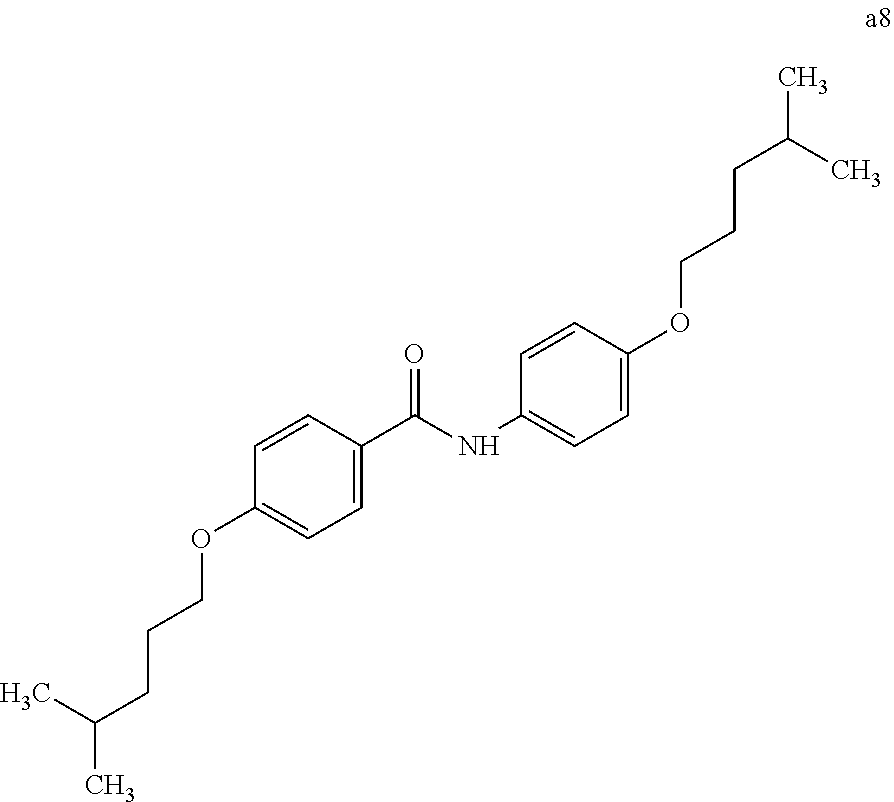
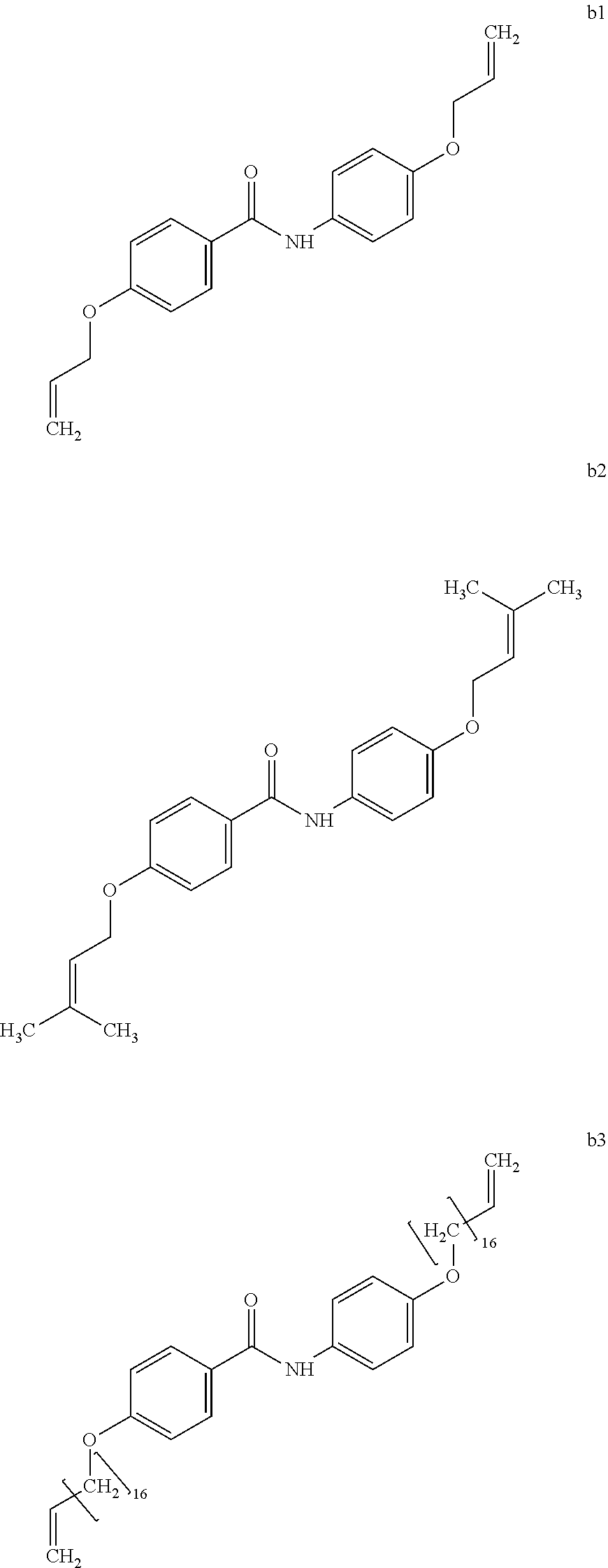



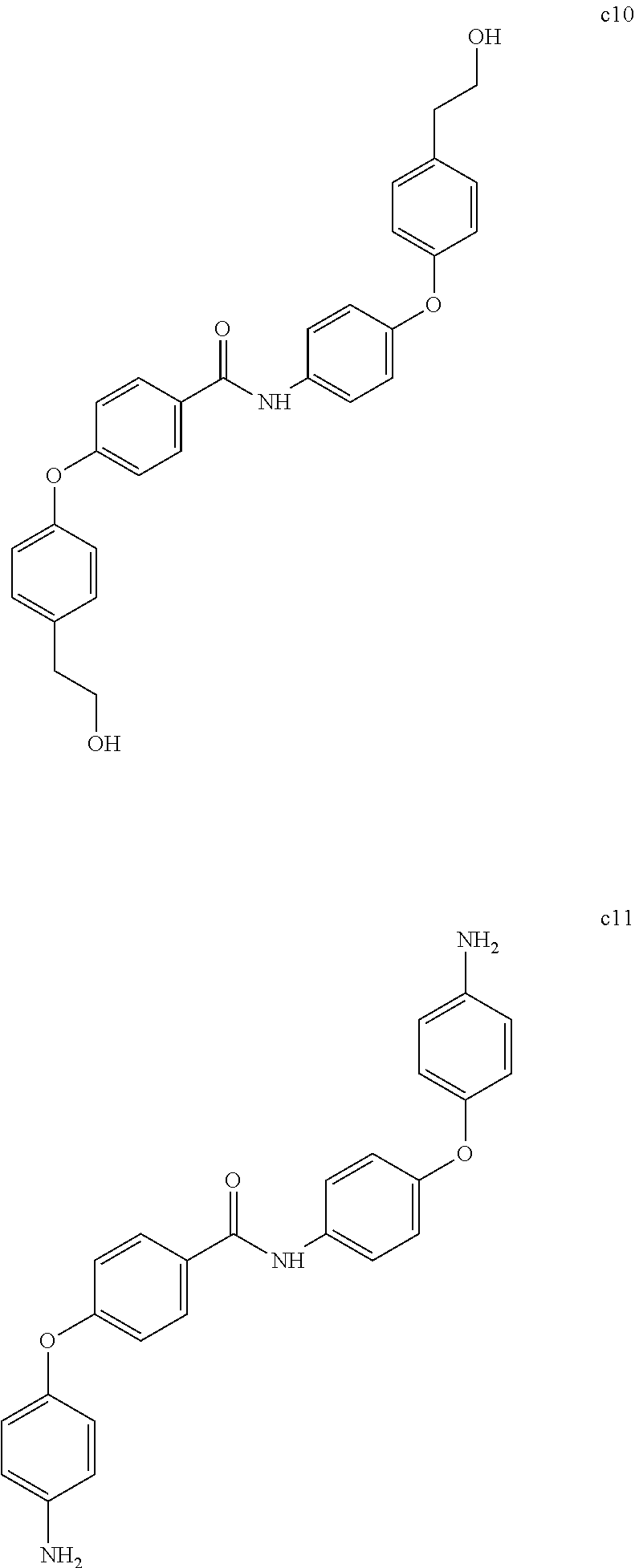

View All Diagrams
| United States Patent | 10,703,911 |
| Fujita , et al. | July 7, 2020 |
Organic colorant, coloring composition, and inkjet ink
Abstract
Organic colorant represented by General Formula (1) below: ##STR00001## where in the General Formula (1), R.sub.1 and R.sub.2 each independently represent C1-C20 alkyl group, C1-C20 alkenyl group, phenyl group, naphthyl group, or group represented by --(CH.sub.2).sub.n--COO--R.sub.3, --(CH.sub.2).sub.n--R.sub.4, --(CH.sub.2).sub.n--CONH--R.sub.5, --CR.sub.6R.sub.7--COO--R.sub.8, or --(CH.sub.2).sub.n--OCOCH.sub.3; R.sub.3 represents hydrogen atom or C1-C2 alkyl group; R.sub.4 represents hydroxy group, C1-C2 alkoxy group, C2-C5 alkenyloxy group, SO.sub.3Na group, OSO.sub.3Na group, phenyl group, phenylalkyl group, naphthyl group, or naphthylalkyl group; R.sub.5 represents C1-C20 alkyl group, C1-C20 alkenyl group, or C1-C12 hydroxyalkyl group; R.sub.6 represents hydrogen atom or methyl group; R.sub.7 represents C1-C4 alkyl group; R.sub.8 represents C1-C5 alkyl group; and n is integer of from 1 to 12.
| Inventors: | Fujita; Takuya (Aichi, JP), Miyazawa; Yoshimasa (Kanagawa, JP), Tomura; Tatsuya (Tokyo, JP), Yanagisawa; Masahiro (Kanagawa, JP), Nagai; Kiyofumi (Tokyo, JP), Kondo; Yukishige (Tokyo, JP), Migii; Juki (Tokyo, JP) | ||||||||||
|---|---|---|---|---|---|---|---|---|---|---|---|
| Applicant: |
|
||||||||||
| Assignee: | Ricoh Company, Ltd. (Tokyo,
JP) Tokyo University of Science Foundation (Tokyo, JP) |
||||||||||
| Family ID: | 64904500 | ||||||||||
| Appl. No.: | 16/027,547 | ||||||||||
| Filed: | July 5, 2018 |
Prior Publication Data
| Document Identifier | Publication Date | |
|---|---|---|
| US 20190010331 A1 | Jan 10, 2019 | |
Foreign Application Priority Data
| Jul 10, 2017 [JP] | 2017-134791 | |||
| Apr 19, 2018 [JP] | 2018-080416 | |||
| Current U.S. Class: | 1/1 |
| Current CPC Class: | C09D 11/322 (20130101); C09B 57/00 (20130101) |
| Current International Class: | C09B 57/00 (20060101); C09D 11/322 (20140101) |
References Cited [Referenced By]
U.S. Patent Documents
| 2012/0174824 | July 2012 | Takenaka et al. |
| 2016/0075917 | March 2016 | Hoshino et al. |
| 2018/0056692 | March 2018 | Tomura et al. |
| 2018/0094155 | April 2018 | Fujita et al. |
| 2018/0118966 | May 2018 | Tomura et al. |
| 102659628 | Sep 2012 | CN | |||
| 09-207446 | Aug 1997 | JP | |||
| H09207446 | Aug 1997 | JP | |||
| 2005-036079 | Feb 2005 | JP | |||
| 2009-132641 | Jun 2009 | JP | |||
| 2011-052041 | Mar 2011 | JP | |||
| 2013-203785 | Oct 2013 | JP | |||
| 2014-074127 | Apr 2014 | JP | |||
| 2017-165834 | Sep 2017 | JP | |||
| WO2014/021405 | Feb 2014 | WO | |||
Other References
|
English Translation of JPH09207446, pp. 1-13, Aug. 1997. cited by examiner . CAS Registry, CAS No. 900710-64-7, Aug. 11, 2006, p. 1. cited by examiner . Mori et al. Chemistry Letters (1997), (6), 509-510. cited by examiner. |
Primary Examiner: Muresan; Ana Z
Attorney, Agent or Firm: Oblon, McClelland, Maier & Neustadt, L.L.P.
Claims
What is claimed is:
1. An organic colorant of General Formula (1) below: ##STR00180## where in the General Formula (1), R.sub.1 and R.sub.2 each independently represent an alkenyl group including from 2 to 20 carbon atoms, a phenyl group, a naphthyl group, or a group represented by --(CH.sub.2).sub.n--COO--R.sub.3, --(CH.sub.2).sub.n--R.sub.4, --(CH.sub.2).sub.n--CONH--R.sub.5, --CR.sub.6R.sub.7--COO--R.sub.8, or --(CH.sub.2).sub.n--OCOCH.sub.3; R.sub.3 represents a hydrogen atom or an alkyl group including from 1 to 2 carbon atoms; R.sub.4 represents a hydroxy group, an alkoxy group including from 1 to 2 carbon atoms, an alkenyloxy group including from 2 to 5 carbon atoms, a SO.sub.3Na group, an OSO.sub.3Na group, a phenyl group, a phenylalkyl group where an alkyl portion of the phenylalkyl group includes from 1 to 3 carbon atoms, a naphthyl group, or a naphthylalkyl group where an alkyl portion of the naphthylalkyl group includes from 1 to 3 carbon atoms; R.sub.5 represents an alkyl group including from 1 to 20 carbon atoms, an alkenyl group including from 2 to 20 carbon atoms, or a hydroxyalkyl group including from 1 to 12 carbon atoms; R.sub.6 represents a hydrogen atom or a methyl group; R.sub.7 represents an alkyl group including from 1 to 4 carbon atoms; R.sub.8 represents an alkyl group including from 1 to 5 carbon atoms; and n is an integer of from 1 to 12, wherein when R.sub.1 or R.sub.2 represent a phenyl group and said phenyl group is substituted the substituent is at least one selected from the group consisting of an alkyl group, an alkenyl group, a hydroxyalkyl group, a hydroxyl group, an alkoxy group, an alkenyloxy group, a cyanoalkyl group, a carboxy group, an alkoxycarbonyl group, and an amino group.
2. The organic colorant according to claim 1, wherein at least one of R.sub.1 and R.sub.2 represents a substituted phenyl group or a substituted naphthyl group, wherein the substituent of said substituted phenyl group is at least one selected from the group consisting of an alkyl group, an alkenyl group, a hydroxyalkyl group, a hydroxyl group, an alkoxy group, an alkenyloxy group, a cyanoalkyl group, a carboxy group, an alkoxycarbonyl group, and an amino group, and wherein the substituent of said substituted naphthyl group is at least one selected from the group consisting of an alkyl group, an alkenyl group, a hydroxyalkyl group, a hydroxyl group, an alkoxy group, an alkenyloxy group, a cyano group, a cyanoalkyl group, a carboxy group, an alkoxycarbonyl group, and an amino group.
3. The organic colorant according to claim 1, wherein the R.sub.1 and the R.sub.2 each independently represent a group represented by a straight-chain alkenyl group including from 2 to 20 carbon atoms.
4. The organic colorant according to claim 1, wherein the R.sub.1 and the R.sub.2 are --(CH.sub.2).sub.2--OH.
5. A coloring composition comprising an organic solvent, and an organic colorant of General Formula (1) below: ##STR00181## where in the General Formula (1), R.sub.1 and R.sub.2 each independently represent an alkenyl group including from 2 to 20 carbon atoms, a phenyl group, a naphthyl group, or a group represented by --(CH.sub.2).sub.n--COO--R.sub.3, --(CH.sub.2).sub.n--R.sub.4, --(CH.sub.2).sub.n--CONH--R.sub.5, --CR.sub.6R.sub.7--COO--R.sub.8, or --(CH.sub.2).sub.n--OCOCH.sub.3; R.sub.3 represents a hydrogen atom or an alkyl group including from 1 to 2 carbon atoms; R.sub.4 represents a hydroxy group, an alkoxy group including from 1 to 2 carbon atoms, an alkenyloxy group including from 2 to 5 carbon atoms, a SO.sub.3Na group, an OSO.sub.3Na group, a phenyl group, a phenylalkyl group where an alkyl portion of the phenylalkyl group includes from 1 to 3 carbon atoms, a naphthyl group, or a naphthylalkyl group where an alkyl portion of the naphthylalkyl group includes from 1 to 3 carbon atoms; R.sub.5 represents an alkyl group including from 1 to 20 carbon atoms, an alkenyl group including from 2 to 20 carbon atoms, or a hydroxyalkyl group including from 1 to 12 carbon atoms; R.sub.6 represents a hydrogen atom or a methyl group; R.sub.7 represents an alkyl group including from 1 to 4 carbon atoms; R.sub.8 represents an alkyl group including from 1 to 5 carbon atoms; and n is an integer of from 1 to 12, wherein when R.sub.1 or R.sub.2 represent a phenyl group and said phenyl group is substituted the substituent is at least one selected from the group consisting of an alkyl group, an alkenyl group, a hydroxyalkyl group, a hydroxyl group, an alkoxy group, an alkenyloxy group, a cyanoalkyl group, a carboxy group, an alkoxycarbonyl group, and an amino group.
6. An ink comprising an organic solvent, and an organic colorant of General Formula (1) below: ##STR00182## where in the General Formula (1), R.sub.1 and R.sub.2 each independently represent an alkenyl group including from 2 to 20 carbon atoms, a phenyl group, a naphthyl group, or a group represented by --(CH.sub.2).sub.n--COO--R.sub.3, --(CH.sub.2).sub.n--R.sub.4, --(CH.sub.2).sub.n--CONH--R.sub.5, --CR.sub.6R.sub.7--COO--R.sub.8, or --(CH.sub.2).sub.n--OCOCH.sub.3; R.sub.3 represents a hydrogen atom or an alkyl group including from 1 to 2 carbon atoms; R.sub.4 represents a hydroxy group, an alkoxy group including from 1 to 2 carbon atoms, an alkenyloxy group including from 2 to 5 carbon atoms, a SO.sub.3Na group, an OSO.sub.3Na group, a phenyl group, a phenylalkyl group where an alkyl portion of the phenylalkyl group includes from 1 to 3 carbon atoms, a naphthyl group, or a naphthylalkyl group where an alkyl portion of the naphthylalkyl group includes from 1 to 3 carbon atoms; R.sub.5 represents an alkyl group including from 1 to 20 carbon atoms, an alkenyl group including from 2 to 20 carbon atoms, or a hydroxyalkyl group including from 1 to 12 carbon atoms; R.sub.6 represents a hydrogen atom or a methyl group; R.sub.7 represents an alkyl group including from 1 to 4 carbon atoms; R.sub.8 represents an alkyl group including from 1 to 5 carbon atoms; and n is an integer of from 1 to 12, wherein when R.sub.1 or R.sub.2 represent a phenyl group and said phenyl group is substituted the substituent is at least one selected from the group consisting of an alkyl group, an alkenyl group, a hydroxyalkyl group, a hydroxyl group, an alkoxy group, an alkenyloxy group, a cyanoalkyl group, a carboxy group, an alkoxycarbonyl group, and an amino group.
7. The organic colorant according to claim 1, wherein R.sub.4 is a substituted phenylalkyl group or substituted naphthylalkyl group, and wherein the substituent is at least one selected from the group consisting of an alkyl group, an alkenyl group, a hydroxyalkyl group, a hydroxyl group, an alkoxy group, an alkenyloxy group, a cyano group, a cyanoalkyl group, a carboxy group, an alkoxycarbonyl group, and an amino group.
8. The organic colorant according to claim 1, wherein R.sub.1 and R.sub.2 independently represent a substituted phenyl group or a substituted naphthyl group, wherein the substituent of said substituted phenyl group is at least one selected from the group consisting of an alkyl group, an alkenyl group, a hydroxyalkyl group, a hydroxyl group, an alkoxy group, an alkenyloxy group, a cyanoalkyl group, a carboxy group, an alkoxycarbonyl group, and an amino group, and wherein the substituent of said substituted naphthyl group is at least one selected from the group consisting of an alkyl group, an alkenyl group, a hydroxyalkyl group, a hydroxyl group, an alkoxy group, an alkenyloxy group, a cyano group, a cyanoalkyl group, a carboxy group, an alkoxycarbonyl group, and an amino group.
9. The organic colorant according to claim 1, wherein R.sub.1 and R.sub.2 independently represent a substituted phenyl group or a substituted naphthyl group and R.sub.4 is a substituted phenylalkyl group or substituted naphthylalkyl group, wherein the substituent of said substituted phenyl group is at least one selected from the group consisting of an alkyl group, an alkenyl group, a hydroxyalkyl group, a hydroxyl group, an alkoxy group, an alkenyloxy group, a cyanoalkyl group, a carboxy group, an alkoxycarbonyl group, and an amino group, and wherein the substituent of said substituted naphthyl group, said substituted phenylalkyl group, and said substituted naphthylalkyl group is at least one selected from the group consisting of an alkyl group, an alkenyl group, a hydroxyalkyl group, a hydroxyl group, an alkoxy group, an alkenyloxy group, a cyano group, a cyanoalkyl group, a carboxy group, an alkoxycarbonyl group, and an amino group.
10. The coloring composition according to claim 5, wherein the R.sub.1 and the R.sub.2 are --(CH.sub.2).sub.2--OH.
11. The ink according to claim 6, wherein the R.sub.1 and the R.sub.2 are --(CH.sub.2).sub.2--OH.
Description
CROSS-REFERENCE TO RELATED APPLICATIONS
The present application claims priority under 35 U.S.C. .sctn. 119 to Japanese Patent Application No. 2017-134791, filed Jul. 10, 2017 and Japanese Patent Application No. 2018-080416, filed Apr. 19, 2018. The contents of which are incorporated herein by reference in their entirety.
BACKGROUND OF THE INVENTION
Field of the Invention
The present disclosure relates to an organic colorant, a coloring composition, and an inkjet ink.
Description of the Related Art
There are many opportunities to see articles having metallic gloss in many situations of daily life because these articles give gorgeous impressions to people. A metal itself may be used to give design characteristics. In many cases, however, design characteristics are given by coating a coloring composition having metallic gloss on a substrate.
As the method of the coating, there have been used a method of the printing through various printing methods by using a printing ink including a pigment having luster property and a method for performing the transfer foil by an adhesive or through heat seal.
Among colors having metallic gloss, gold is particularly a symbol of wealth, and has been popular among people from time immemorial. Therefore, gold is an indispensable color for auspicious events such as the New Year. In addition, silver is also popular because of calm tone and is often seen in many situations. Moreover, silver is different from gold because it can develop various metallic gloss colors including the gold color by mixing a silver-colored coloring composition with another colored coloring composition. Therefore, silver is versatilely used compared to gold and is valuable in terms of industrial applications.
Conventionally, pigments used for the coloring composition having metallic gloss of silver are, for example, aluminum fine particles and silver powders and the aluminum powders have widely been used in terms of cost. However, the aluminum fine particles have a high specific gravity and are difficult to stably exist in the coloring composition, causing precipitation over time. In some cases, the aluminum fine particles may be adhered to each other to cause hard caking, which is problematic.
In order to reduce environmental loading, coloring compositions such as printing inks have been replaced with aqueous coloring compositions that hardly include an organic solvent one after another. However, there is a problem that aluminum fine particles react with water to generate a hydrogen gas and aluminum is changed to alumina, losing metallic glossiness.
In addition, development of inkjet printing technology has increased a desire to obtain a print matter having metallic glossiness even in the inkjet printing. For example, incorporation of a commercially available squamous aluminum pigment or a titanium oxide-coated mica pigment as a luster pigment into the inkjet ink has been proposed (see, for example, Japanese Unexamined Patent Application Publication No. 2005-036079). Moreover, it has been proposed that the squamous aluminum pigment is subjected to a treatment that does not easily cause precipitation in the ink (see, for example, Japanese Unexamined Patent Application Publication No. 2011-52041). Furthermore, it is proposed that when a water-resistant aluminum pigment is used, generation of a hydrogen gas will be prevented because of reaction between aluminum particles and water (see, for example, Japanese Unexamined Patent Application Publication No. 2014-074127).
In recent years, development of organic dye materials having metallic glossiness has widely been performed (see, for example, Japanese Unexamined Patent Application Publication No. 2013-203785, Japanese Unexamined Patent Application Publication No. 2009-132641, and International Publication No. WO 2014/021405). The organic dye materials are considerably light in specific weight compared to metals. Therefore, if the organic dye materials can appropriately be dispersed, it is possible to drastically decrease a risk of precipitation in the coloring compositions. In addition, an appropriate design of structures of the organic dye materials makes it possible to stably exist even in the aqueous coloring compositions.
SUMMARY OF THE INVENTION
According to one aspect of the present disclosure, an organic colorant is represented by General Formula (1) below.
##STR00002##
In the General Formula (1), R.sub.1 and R.sub.2 each independently represent an alkyl group including from 1 to 20 carbon atoms, an alkenyl group including from 1 to 20 carbon atoms, a phenyl group, a naphthyl group, or a group represented by --(CH.sub.2).sub.n--COO--R.sub.3, --(CH.sub.2).sub.n--R.sub.4, --(CH.sub.2).sub.n--CONH--R.sub.5, --CR.sub.6R.sub.7--COO--R.sub.8, or --(CH.sub.2).sub.n--OCOCH.sub.3; R.sub.3 represents a hydrogen atom or an alkyl group including from 1 to 2 carbon atoms; R.sub.4 represents a hydroxy group, an alkoxy group including from 1 to 2 carbon atoms, an alkenyloxy group including from 2 to 5 carbon atoms, a SO.sub.3Na group, an OSO.sub.3Na group, a phenyl group, a phenylalkyl group where an alkyl portion of the phenylalkyl group includes from 1 to 3 carbon atoms, a naphthyl group, or a naphthylalkyl group where an alkyl portion of the naphthylalkyl group includes from 1 to 3 carbon atoms; R.sub.5 represents an alkyl group including from 1 to 20 carbon atoms, an alkenyl group including from 1 to 20 carbon atoms, or a hydroxyalkyl group including from 1 to 12 carbon atoms; R.sub.6 represents a hydrogen atom or a methyl group; R.sub.7 represents an alkyl group including from 1 to 4 carbon atoms; R.sub.8 represents an alkyl group including from 1 to 5 carbon atoms; and n is an integer of from 1 to 12.
DESCRIPTION OF THE EMBODIMENT
(Organic Colorant)
An organic colorant of the present disclosure is represented by General Formula (1) below.
##STR00003##
In the General Formula (1), R.sub.1 and R.sub.2 each independently represent an alkyl group including from 1 to 20 carbon atoms, an alkenyl group including from 1 to 20 carbon atoms, a phenyl group, a naphthyl group, or a group represented by --(CH.sub.2).sub.n--COO--R.sub.3, --(CH.sub.2).sub.n--R.sub.4, --(CH.sub.2).sub.n--CONH--R.sub.5, --CR.sub.6R.sub.7--COO--R.sub.8, or --(CH.sub.2).sub.n--OCOCH.sub.3; R.sub.3 represents a hydrogen atom or an alkyl group including from 1 to 2 carbon atoms; R.sub.4 represents a hydroxy group, an alkoxy group including from 1 to 2 carbon atoms, an alkenyloxy group including from 2 to 5 carbon atoms, a SO.sub.3Na group, an OSO.sub.3Na group, a phenyl group, a phenylalkyl group where an alkyl portion of the phenylalkyl group includes from 1 to 3 carbon atoms, a naphthyl group, or a naphthylalkyl group where an alkyl portion of the naphthylalkyl group includes from 1 to 3 carbon atoms; R.sub.5 represents an alkyl group including from 1 to 20 carbon atoms, an alkenyl group including from 1 to 20 carbon atoms, or a hydroxyalkyl group including from 1 to 12 carbon atoms; R.sub.6 represents a hydrogen atom or a methyl group; R.sub.7 represents an alkyl group including from 1 to 4 carbon atoms; R.sub.8 represents an alkyl group including from 1 to 5 carbon atoms; and n is an integer of from 1 to 12.
The organic colorant of the present disclosure is based on the finding that conventional inks including, for example, conventional metal particles have a problem that nozzle clogging and precipitation of luster pigments occur because the particulate pigments in the ink are large. In addition, the organic colorant of the present disclosure is based on the following finding. Specifically, there are problems that an organic dye material having silvery gloss that is most highly versatilely used has not been proposed and an ink excellent in silvery gloss has not been developed yet, in conventional organic dye materials.
In general, the metallic gloss means appearance of luster or gloss specific to metals and also includes metallic gloss having low luster property through matting. Specifically, presence or absence of metallic gloss is judged by measuring the specular reflectance. The specular reflectance of 10% or more is judged "presence of the metallic gloss". When the specular reflectance is less than 10%, matt color tone strongly appears, which may be difficult to be considered as "presence of the metallic gloss".
Meanwhile, the silvery gloss of the present disclosure is defined as follows. That is, the specular reflectance is 10% or more, and a* value and b* value in the color values (a* value, b* value) are each -3.5 or more but 3.5 or less. When these ranges are not satisfied, yellowish gloss or blueish gloss may appear, which is difficult to be considered as silver. Note that, the silvery origami has specular reflectance of 38%, a* value of -1.2, and b* value of -3.2.
An object of the present invention is to provide an organic colorant capable of forming an image having silvery gloss.
According to the present disclosure, it is possible to provide an organic colorant capable of forming an image having silvery gloss.
<Compound>
In order that the compound represented by the General Formula (1) develops silvery gloss, the basic skeleton except for R.sub.1 and R.sub.2 is more important. Meanwhile, R.sub.1 and R.sub.2 can be selected from various ones so long as R.sub.1 and R.sub.2 do not adversely affect the properties of the basic skeleton.
In order to develop silvery gloss, it is important for the compound to be a trans structure. A pure cis structure of the compound does not develop silvery gloss. Therefore, the trans structure of the compound is presented in the General Formula (1). However, even when a small amount of the cis structure thereof is included, this does not largely impart an adverse effect to silvery gloss. Therefore, the cis structure thereof may be included so long as silvery gloss is not adversely affected.
R.sub.1 and R.sub.2 in the General Formula (1) each independently represent an alkyl group including from 1 to 20 carbon atoms, an alkenyl group including from 1 to 20 carbon atoms, a phenyl group, a naphthyl group, or any of the other groups.
The alkyl group including from 1 to 20 carbon atoms in R.sub.1 and R.sub.2 in the General Formula (1) is not particularly limited and may be appropriately selected depending on the intended purpose. Examples thereof include a methyl group, an ethyl group, a propyl group, an isopropyl group, a butyl group, a hexyl group, a heptyl group, an octyl group, a 2-ethylhexyl group, a tert-octyl group, and a cyclohexyl group. The number of carbon atoms in the alkyl group is from 1 to 20, preferably from 2 to 20, more preferably from 3 to 20, still more preferably from 3 to 11, particularly preferably 4 (butyl group). The lower limit of the number of carbon atoms in the alkyl group is preferably 2 or more, more preferably 3 or more, more preferably 4 or more, particularly preferably 11 or more.
When the number of carbon atoms is from 1 to 20, crystallinity of the compound can be improved and silvery gloss can easily be developed. Moreover, a straight-chain alkyl group is preferable in terms of glossiness. These may be used alone or in combination.
The alkenyl group including from 1 to 20 carbon atoms in R.sub.1 and R.sub.2 in the General Formula (1) is not particularly limited and may be appropriately selected depending on the intended purpose. The aforementioned alkenyl group may include one or more carbon-carbon double bonds in its structure. Examples thereof include a vinyl group, a 1-propenyl group, an allyl group, a 2-butenyl group, a 3-butenyl group, an isopropenyl group, an isobutenyl group, a 1-pentenyl group, a 2-pentenyl group, a 3-pentenyl group, a 4-pentenyl group, a 1-hexenyl group, a 2-hexenyl group, a 3-hexenyl group, a 4-hexenyl group, a 5-hexenyl group, a cyclopentenyl group, a cyclohexenyl group, a 1,3-butadienyl group, a cyclohexadienyl group, and a cyclopentadienyl group. When the number of carbon atoms is from 1 to 20, crystallinity of the compound can be improved and silvery gloss can easily be developed. These may be used alone or in combination.
The phenyl group in R.sub.1 and R.sub.2 in the General Formula (1) may include a substituent so long as it does not adversely affect development of silvery gloss. Examples of the substituent include an alkyl group, an alkenyl group, a hydroxyalkyl group, a hydroxy group, an alkoxy group, an alkenyloxy group, a cyano group, a cyanoalkyl group, a carboxy group, an alkoxycarbonyl group, and an amino group. The number of carbon atoms of an alkyl portion of the substituent is preferably from 1 to 6. These may be used alone or in combination.
The naphthyl group in R.sub.1 and R.sub.2 in the General Formula (1) may include a substituent so long as it does not adversely affect development of silvery gloss. Examples of the substituent include an alkyl group, an alkenyl group, a hydroxyalkyl group, a hydroxy group, an alkoxy group, an alkenyloxy group, a cyano group, a cyanoalkyl group, a carboxy group, an alkoxycarbonyl group, and an amino group. The number of carbon atoms of an alkyl portion of the substituent is preferably from 1 to 6. These may be used alone or in combination.
Examples of the other groups in R.sub.1 and R.sub.2 in the General Formula (1) include a group represented by --(CH.sub.2).sub.n--COO--R.sub.3, --(CH.sub.2).sub.n--R.sub.4, --(CH.sub.2).sub.n--CONH--R.sub.5, --CR.sub.6R.sub.7--COO--R.sub.8, or --(CH.sub.2).sub.n--OCOCH.sub.3.
The R.sub.3 represents a hydrogen atom or an alkyl group including from 1 to 2 carbon atoms.
The R.sub.4 represents a hydroxy group, an alkoxy group including from 1 to 2 carbon atoms, an alkenyloxy group including from 2 to 5 carbon atoms, a SO.sub.3Na group, an OSO.sub.3Na group, a phenyl group, a phenylalkyl group where an alkyl portion of the phenylalkyl group includes from 1 to 3 carbon atoms, a naphthyl group, or a naphthylalkyl group where an alkyl portion of the naphthylalkyl group includes from 1 to 3 carbon atoms.
The R.sub.5 represents an alkyl group including from 1 to 20 carbon atoms, an alkenyl group including from 1 to 20 carbon atoms, or a hydroxyalkyl group including from 1 to 12 carbon atoms.
The R.sub.6 represents a hydrogen atom or a methyl group.
The R.sub.7 represents an alkyl group including from 1 to 4 carbon atoms.
The R.sub.8 represents an alkyl group including from 1 to 5 carbon atoms. These may be used alone or in combination.
The alkyl group including from 1 to 2 carbon atoms in R.sub.3 in the General Formula (1) is not particularly limited and may be appropriately selected depending on the intended purpose. Examples thereof include a methyl group and an ethyl group.
The alkoxy group including from 1 to 2 carbon atoms in R.sub.4 in the General Formula (1) is not particularly limited and may be appropriately selected depending on the intended purpose. Examples thereof include a methoxy group and an ethoxy group.
The alkenyloxy group including from 2 to 5 carbon atoms in R.sub.4 in the General Formula (1) is not particularly limited and may be appropriately selected depending on the intended purpose. Examples thereof include a vinyl group, a methyl vinyl ether group, and an ethyl vinyl ether group.
The phenyl group and the phenylalkyl group, where an alkyl portion of the phenylalkyl group includes from 1 to 3 carbon atoms, in R.sub.4 in the General Formula (1) are not particularly limited and may be appropriately selected depending on the intended purpose. Any portion of the phenyl group portion may include a substituent so long as it does not adversely affect development of silvery gloss. Examples of the substituent include an alkyl group, an alkenyl group, a hydroxyalkyl group, a hydroxy group, an alkoxy group, an alkenyloxy group, a cyano group, a cyanoalkyl group, a carboxy group, an alkoxycarbonyl group, and an amino group. The number of carbon atoms in an alkyl group portion of the substituent is preferably from 1 to 6. These may be used alone or in combination.
The naphthyl group and the naphthylalkyl group, where an alkyl portion of the naphthylalkyl group includes from 1 to 3 carbon atoms, in R.sub.4 in the General Formula (1) are not particularly limited and may be appropriately selected depending on the intended purpose. Any portion of the naphthyl group portion may include a substituent so long as it does not adversely affect development of silvery gloss. Examples of the substituent include an alkyl group, an alkenyl group, a hydroxyalkyl group, a hydroxy group, an alkoxy group, an alkenyloxy group, a cyano group, a cyanoalkyl group, a carboxy group, an alkoxycarbonyl group, and an amino group. The number of carbon atoms of the alkyl group portion of the substituent is preferably from 1 to 6. These may be used alone or in combination.
The alkyl group including from 1 to 20 carbon atoms in R.sub.5 in the General Formula (1) is not particularly limited and may be appropriately selected depending on the intended purpose. Examples thereof include a methyl group, an ethyl group, a propyl group, a butyl group, a pentyl group, a hexyl group, a heptyl group, an octyl group, a nonyl group, a decyl group, a dodecyl group, an octadecyl group, a trifluoromethyl group, an isopropyl group, an isobutyl group, an isopentyl group, a 2-ethylhexyl group, a sec-butyl group, a tert-butyl group, a sec-pentyl group, a tert-pentyl group, a tert-octyl group, a neopentyl group, a cyclopropyl group, a cyclobutyl group, a cyclopentyl group, and a cyclohexyl group. When the number of carbon atoms is from 1 to 20, the compound can be improved in crystallinity. As a result, it is easy to develop silvery gloss.
The alkenyl group including from 1 to 20 carbon atoms in R.sub.5 in the General Formula (1) is not particularly limited and may be appropriately selected depending on the intended purpose. The aforementioned alkenyl group may include one or more carbon-carbon double bonds in its structure. Examples of the alkenyl group include a vinyl group, a 1-propenyl group, an allyl group, a 2-butenyl group, a 3-butenyl group, an isopropenyl group, an isobutenyl group, a 1-pentenyl group, a 2-pentenyl group, a 3-pentenyl group, a 4-pentenyl group, a 1-hexenyl group, a 2-hexenyl group, a 3-hexenyl group, a 4-hexenyl group, a 5-hexenyl group, a cyclopentenyl group, a cyclohexenyl group, a 1,3-butadienyl group, a cyclohexadienyl group, and a cyclopentadienyl group. When the number of carbon atoms is from 1 to 20, the compound can be improved in crystallinity. As a result, it is easy to develop silvery gloss.
The hydroxyalkyl group including from 1 to 12 carbon atoms in R.sub.5 in the General Formula (1) is not particularly limited and may be appropriately selected depending on the intended purpose. Examples thereof include --(CH.sub.2).sub.2--OH and --(CH.sub.2).sub.12--OH.
R.sub.6 in the General Formula (1) is, for example, a hydrogen atom and a methyl group.
The alkyl group including from 1 to 4 carbon atoms in R.sub.7 in the General Formula (1) is not particularly limited and may be appropriately selected depending on the intended purpose. Examples thereof include a methyl group, an ethyl group, a propyl group, a butyl group, an isopropyl group, and an isobutyl group.
The alkyl group including from 1 to 5 carbon atoms in R.sub.8 in the General Formula (1) is not particularly limited and may be appropriately selected depending on the intended purpose. Examples thereof include a methyl group, an ethyl group, a propyl group, a butyl group, an isopropyl group, an isobutyl group, a sec-butyl group, a tert-butyl group, an isopentyl group, a neo-pentyl group, and a tert-pentyl group.
In R.sub.1 and R.sub.2 in the General Formula (1), n is an integer of from 1 to 12. When the n is from 1 to 12, the compound is improved in crystallinity. As a result, it is easy to develop silvery gloss.
Specific examples of the compound of the present disclosure include, but are not limited to, the following compounds. All of the following compounds exhibit silvery gloss.
<<Compound Group a>>
##STR00004## ##STR00005## ##STR00006## <<Compound Group b>>
##STR00007## <<Compound Group c>
##STR00008## ##STR00009## ##STR00010## ##STR00011## ##STR00012## <<Compound Group d>>
##STR00013## ##STR00014## ##STR00015## ##STR00016## ##STR00017## <<Compound Group e>>
##STR00018## ##STR00019## <<Compound Group f>>
##STR00020## ##STR00021## ##STR00022## ##STR00023## ##STR00024## <<Compound Group g>>
##STR00025## ##STR00026## ##STR00027## <<Compound Group h>>
##STR00028## ##STR00029## <<Compound Group i>>
##STR00030## <<Compound Group j>>
##STR00031## ##STR00032## ##STR00033## ##STR00034## (Coloring Composition)
A coloring composition of the present disclosure includes the organic colorant of the present disclosure, and further includes an organic solvent, water, a resin, a surfactant, and other components, if necessary.
<Organic Solvent>
As the aforementioned organic solvent, an organic solvent used in the typical ink can be used.
Examples of the organic solvent include:
alcohols (e.g., methyl alcohol, ethyl alcohol, n-propyl alcohol, isopropyl alcohol, n-butyl alcohol, tridecyl alcohol, cyclohexyl alcohol, and 2-methylcyclohexyl alcohol);
glycols (e.g., ethylene glycol, diethylene glycol, triethylene glycol, polyethylene glycol, propylene glycol, and dipropylene glycol);
glycol ethers (e.g., ethylene glycol monomethyl ether, ethylene glycol monoethyl ether, ethylene glycol monobutyl ether, ethylene glycol diethyl ether, ethylene glycol dimethyl ether, diethylene glycol monomethyl ether, diethylene glycol monoethyl ether, diethylene glycol monobutyl ether, diethylene glycol ethyl methyl ether, diethylene glycol dimethyl ether, diethylene glycol diethyl ether, diethylene glycol dibutyl ether, propylene glycol monomethyl ether, propylene glycol monoethyl ether, propylene glycol monobutyl ether, dipropylene glycol monomethyl ether, dipropylene glycol monoethyl ether, propylene glycol dimethyl ether, dipropylene glycol dimethyl ether, propylene glycol diethyl ether, dipropylene glycol diethyl ether, ethylene glycol monomethyl acetate, ethylene glycol monoethyl acetate, ethylene glycol monobutyl acetate, diethylene glycol monomethyl acetate, ethylene glycol monomethyl ether acetate, ethylene glycol monoethyl ether acetate, ethylene glycol monobutyl ether acetate, propylene glycol monomethyl ether acetate, propylene glycol monoethyl ether acetate, diethylene glycol monoethyl acetate, diethylene glycol monobutyl acetate, and triethylene glycol monobutyl ether);
esters (e.g., ethyl acetate, isopropylene acetate, n-butyl acetate, methyl lactate, ethyl lactate, and butyl lactate);
ketones (e.g., acetone, methyl ethyl ketone, methyl isobutyl ketone, cyclohexanone, isophorone, and diacetone alcohol); and
tetrahydrofuran (THF); and
other organic solvents (e.g., hexane, toluene, xylene, acetonitrile, .gamma.-butyrolactone, and .gamma.-valerolactone). In terms of compatibility with properties of head nozzles during printing, safety, and drying ability, various solvents are selected, and mixture of one or more solvents can be used if necessary.
These may be used alone or in combination.
As the organic solvent, an aqueous organic solvent used in typical inks can be used.
Examples of the aqueous organic solvent include polyhydric alcohols, ethers such as polyhydric alcohol aryl ethers, nitrogen-containing heterocyclic compounds, amides, amines, and sulfur-containing compounds.
Specific examples of the aqueous organic solvent include: polyhydric alcohols (e.g., 1,2-propanediol, 1,3-propanediol, 1,2-butanediol, 1,3-butanediol, 1,4-butanediol, 2,3-butanediol, 3-methyl-1,3-butanediol, polypropylene glycol, 1,2-pentanediol, 1,3-pentanediol, 1,4-pentanediol, 2,4-pentanediol, 1,5-pentanediol, 1,2-hexanediol, 1,6-hexanediol, 1,3-hexanediol, 2,5-hexanediol, 1,5-hexanediol, glycerin, 1,2,6-hexanetriol, 2-ethyl-1,3-hexanediol, ethyl-1,2,4-butanetriol, 1,2,3-butanetriol, 2,2,4-trimethyl-1,3-pentanediol, and petriol); polyhydric alcohol aryl ethers (e.g., ethylene glycol monophenyl ether, and ethylene glycol monobenzyl ether); nitrogen-containing heterocyclic compounds (e.g., 2-pyrrolidone, N-methyl-2-pyrrolidone, N-hydroxyethyl-2-pyrrolidone, 1,3-dimethyl-2-imidazolidinone, and .epsilon.-caprolactam); amides (e.g., formamide, N-methylformamide, N,N-dimethylformamide, 3-methoxy-N,N-dimethylpropionamide, and 3-butoxy-N,N-dimethylpropionamide); amines (e.g., monoethanolamine, diethanolamine, and triethylamine); sulfur-containing compounds (e.g., dimethyl sulfoxide, sulfolane, and thiodiethanol); propylene carbonate; and ethylene carbonate.
These may be used alone or in combination.
An amount of the organic solvent is preferably 1% by mass or more but 95% by mass or less, more preferably 30% by mass or more but 90% by mass or less, relative to the total amount of the coloring composition in terms of moisture retaining property of the coloring composition, solubility of the organic colorant, improvement of dispersibility, and effective permeation of the coloring composition into a print medium.
Note that, all the other components except for the colorant and the additives (surfactant and dispersing agent) in the coloring composition may be organic solvents, and the coloring composition may be used without addition of water. Even in this case, contained water that cannot be removed may be included.
<Water>
The water is not particularly limited and may be appropriately selected depending on the intended purpose. Examples thereof include pure waters (e.g., ion exchanged water, ultrafiltrated water, reverse osmotic water, and distilled water) and ultrapure water. These may be used alone or in combination.
When the organic colorant, which is a colorant having silvery gloss, is dissolved or dispersed in a medium, all of the resultant products can be used as the coloring composition. The medium to be used is preferably water, a mixture solvent of water and an aqueous organic solvent, or an organic solvent. The organic solvent to be used is particularly preferably a solvent that has an effect on preventing the coloring composition from drying. The water to be used is preferably ion exchanged water, rather than typical water including various ions.
An amount of water is not particularly limited and may be appropriately selected depending on the intended purpose. The amount of water is preferably 1% by mass or more but 70% by mass or less, more preferably 3% by mass or more but 50% by mass or less, relative to the total amount of the coloring composition, in terms of solubility of the organic colorant in the coloring composition, discharge stability of the coloring composition, and prevention of clogging at a nozzle tip.
<Resin>
The resin is not particularly limited and may be appropriately selected depending on the intended purpose. Examples thereof include, urethane resins, polyester resins, acrylic-based resins, vinyl acetate-based resins, styrene-based resins, butadiene-based resins, styrene-butadiene-based resins, vinyl chloride-based resins, acrylic styrene-based resins, and acrylic silicone-based resins.
In the state of a resin emulsion in which resin particles are dispersed in water as a dispersion medium, the coloring composition can be obtained by mixing such resin particles with materials (e.g., coloring agent and organic solvent). As the resin particles, an appropriately synthesized product may be used or a commercially available product may be used. These may be used alone or in combination.
As the resin emulsion, a commercially available product can be used. Examples thereof include ACRIT WEM-321U (acrylic urethane aqueous emulsion, available from Taisei Kako Co., Ltd.).
<Dispersing Agent>
In order to disperse the organic colorant of the present disclosure in an aqueous medium, a dispersing agent may be used. As the dispersing agent, a chemically synthesized surfactant (e.g., ionic surfactants and nonionic surfactants) can be used. In addition, a surfactant originated from natural products or this surfactant modified with, for example, an enzyme can be used.
As the dispersing agent, a commercially available product can be used. Examples of the commercially available product include DISPERBYK-190 (available from BYK-Chemie).
An amount of the dispersing agent is preferably 0.5% by mass or more but 20% by mass or less relative to the total amount of the coloring composition in order to favorably retain dispersion stability of the organic colorant.
<Surfactant>
Examples of the surfactant include silicone-based surfactants, fluorosurfactants, amphoteric surfactants, nonionic surfactants, and anionic surfactants.
Examples of the fluorosurfactants include PolyFox PF-156A (available from Omnova).
<Other Components>
In addition to the aforementioned components, the coloring composition of the present disclosure may include a pH regulator, a preservative, a fungicide, and various additives if necessary, in order to obtain an ink having desired values of physical properties within such a range that does not inhibit the effects of the present disclosure.
<pH regulator>
The pH regulator has no particular limit. It is preferable to adjust the pH to 7 or higher. Specific examples thereof include, but are not limited to, amines such as diethanol amine and triethanol amine.
<Preservatives and Fungicides>
The preservatives and fungicides are not particularly limited. A specific example is 1,2-benzisothiazolin-3-on.
Examples of application of the coloring composition include paints, print inks, colorants for plastics, and color toners. Examples of the print inks include inks for offset printing, inks for gravure printing, inks for flexography printing, and inkjet inks.
The coloring composition can be produced by dispersing materials together with, for example, a dispersion medium using a known disperser. The dispersion medium as used herein means water or an organic solvent during a dispersion treatment using a disperser. That is, the same water or solvent as the water or solvent during the mixing is also referred to as "dispersion medium" during the dispersion treatment for the sake of convenience.
If necessary, various stabilizers and auxiliaries such as dispersing and wetting agents, antiskinning agents, ultraviolet absorbers, and antioxidants may be used.
The varnish used in the inks for offset printing is formed of: a resin (e.g., rosin-modified phenol resin, petroleum resin, alkyd resin, and drying oil-modified resin thereof) as a polymer resin component; a vegetable oil (e.g., linseed oil, tung oil, and soybean oil); and a solvent (e.g., n-paraffin, isoparaffin, aromatic, naphthene, and .alpha.-olefin) according to necessity. Amounts of the resin, the vegetable oil, and the solvent are preferably resin:vegetable oil:solvent=20 to 50:0 to 30:10 to 60 in terms of a mass ratio. In addition, the varnish may include acrylic ester as the resin. In addition to the organic colorant and the varnish, the ink for offset printing may further include a known additive such as the organic solvent, a dryer, a leveling improving agent, or a thickener, if necessary.
The vehicle used in the inks for gravure printing and the inks for flexography printing means an article including a plurality of additives such as resins, solvents, and plasticizers.
Examples of the resin include acrylic-based resins, nitrocellulose-based resins, polyamide-based resins, urethane-based resins, vinyl acetate-based resins, and rosin-based resins. These may be used alone or in combination.
Examples of the solvent include aromatic hydrocarbons, esters, ketones, and alcohols. Specific examples thereof include toluene, xylene, ethyl acetate, butyl acetate, methyl butyl ketone, methyl ethyl ketone, isopropyl alcohol, methanol, and ethanol. These may be used alone or in combination.
The vehicle used in the paint means an article including a plurality of materials such as solvents, resins, and additives.
Irrespective of presence or absence of curing ability and one-pack type/two-pack type, examples of the resin include alkyd resins, modified-alkyd resins, acrylic resins, alkyd-melamine resins, acryl-melamine resins, phenol resins, polyamide resins, epoxy resins, urethane resins, and vinyl acetate resins.
Examples of the solvent include aromatic hydrocarbons, esters, ketones, and alcohols. Specific examples thereof include water, toluene, xylene, ethyl acetate, butyl acetate, methyl butyl ketone, methyl ethyl ketone, isobutyl alcohol, normal butanol, and cyclohexanone. These may be used alone or in combination.
The resin used in the colorants for plastics is not particularly limited and may be appropriately selected depending on the intended purpose. Examples thereof include poly(meth)acrylate, polystyrene, ABS resins, AS resins, polyolefins (e.g., polyethylene and polypropylene), polyamide, polyacetal, polycarbonate, polyesters (e.g., PET and PBT), and thermoplastic resins (e.g., modified-polyphenylene ether).
Examples of the resin used in the color toners include styrene and derivatives thereof (e.g., styrene, vinyltoluene, .alpha.-methylstyrene, and aminostyrene); methacrylic acid esters (e.g., methacrylic acid, methyl methacrylate, ethyl methacrylate, and butyl methacrylate); acrylic esters (e.g., acrylic acid, methyl acrylate, ethyl acrylate, butyl acrylate, and 2-ethylhexyl acrylate); dienes (e.g., butadiene and isoprene); acrylonitriles; maleic acid, maleic anhydride, maleic acid esters; vinyl compounds (e.g., vinyl ether and vinyl acetate); homopolymers and copolymers of olefins (e.g., ethylene and propylene), polyesters, polyamides, and polyurethanes. These may be used alone or in combination. If necessary, known materials such as charge controlling agents (e.g., metal salts of salicylic acids, metal-containing azo compounds, nigrosine, and quaternary ammonium salts) or offset prevention agents (e.g., low-molecular-weight polypropylene, low-molecular-weight polyethylene, and waxes) may be added.
An amount of the organic colorant is preferably 70.0% by mass or less, more preferably 0.01% by mass or more but 50.0% by mass or less, still more preferably 0.5% by mass or more but 15% by mass or less, relative to the total amount of the coloring composition. Note that, the balance is preferably the dispersion medium.
Since the dispersion conditions differ depending on the dispersion medium and the disperser, a dispersion temperature and a dispersion time cannot be specified. The dispersion temperature is preferably room temperature to 240.degree. C., more preferably room temperature to 150.degree. C. The dispersion time is preferably within 120 hours, more preferably within 5 hours.
The coloring composition is mixed with, for example, other additives, a pigment, or a dye according to necessity, and can be finally used as, for example, paints, print inks, colorants for plastics, color toners, and inkjet ink.
The disperser that disperses a pigment when the pigment dispersion is produced is not particularly limited and a known disperser may be appropriately selected depending on the intended purpose. Examples thereof include dispers, homomixers, bead mills, ball mills, twin rolls, triple rolls, pressure kneaders, and ultrasonic dispersers.
(Inkjet Ink)
An inkjet ink of the present disclosure includes the organic colorant of the present disclosure, and further includes an organic solvent, water, a resin, a surfactant, and other components, if necessary.
An amount of the organic colorant is preferably 1.0% by mass or more but 30.0% by mass or less, more preferably 5.0% by mass or more but 25.0% by mass or less, relative to the total amount of the inkjet ink. When the amount is 1.0% by mass or more but 30.0% by mass or less, an image excellent in silvery gloss can be obtained.
The organic solvent, the water, the resin, the surfactant, and the other components in the inkjet ink are appropriately applicable to the items described in the coloring composition.
EXAMPLES
The present disclosure will be described in detail with reference to the following Examples. However, it is noted that the present disclosure is not limited to these Examples.
Example 1 (Synthesis of Compound a1)
##STR00035##
Under a nitrogen atmosphere, a two-necked, recovery flask was charged with p-aminophenol (2.19 g, 20.1 mmol), 4-hydroxybenzoic acid (2.77 g, 20.1 mmol), and 1-ethyl-3-(3-dimethylaminopropyl)carbodiimide hydrochloride (EDC) (3.75 g, 24.2 mmol). Then, acetone (dehydrated) (50 mL) was added thereto and was heated to reflux for 12 hours. Then, the solvent was removed under reduced pressure. The residue was washed once with ethyl acetate (40 mL) and was washed once with dilute hydrochloric acid (40 mL). The resultant was subjected to vacuum filtration to obtain an intermediate of compound a1. The yield was 72%.
Results of NMR measurements of the intermediate of compound a1 are as follows.
.sup.1H NMR (400 MHz; CH.sub.3OD): .delta.
7.79 (doublet (d), 4H), 7.40 (d, 4H), 6.85 (d, 4H), 6.77 (d, 4H)
Next, a two-necked, a recovery flask was charged with the synthesized intermediate of compound a1 (3.30 g, 14.4 mmol), 1-bromobutane (19.74 g, 144.1 mmol), and potassium carbonate (13.9 g, 100.9 mmol). Then, acetone (300 mL) was added thereto and was heated to reflux for 72 hours. Then, the solvent was removed under reduced pressure. Then, the residue was washed twice with hexane (100 mL) (100 mL.times.2 times). Furthermore, the residue after the washing with hexane was recrystallized with acetone to obtain compound a1 as a target product. The yield was 55%.
NMR measurements of the compound a1 are as follows.
.sup.1H NMR (400 MHz; CDCl3): .delta.
7.82 (d, 4H), 7.60 (singlet(s), 1H), 7.97 (d, 4H), 7.91 (d, 4H), 4.03 (triplet (t), 2H), 3. 97 (t, 2H), 1.80 (multilet (m), 4H), 1.50 (m, 4H), 0.99 (m, 6H)
Next, the compound a1 (2.0 g) and methanol (1,200 mL) were added to a 30 mL-sample bottle. The mixture liquid was heated to 80.degree. C. to completely dissolve the solid. Then, the solution was left to stand for 24 hours under room temperature. The precipitated crystal was stacked on a round filter paper (diameter of 21 mm) through vacuum filtration to obtain a crystalline thin film body having silvery gloss of the compound a1.
Example 2 (Synthesis of Compound a2)
##STR00036##
A crystalline thin film body having silvery gloss of compound a2 was obtained in the same manner as in Example 1 except that 1-bromobutane was changed to 1-bromoundecane (33.89 g) (144.1 mmol). NMR measurement was performed in the same manner as in Example 1 to identify that the compound a2 was obtained.
Example 3 (Synthesis of Compound a3)
##STR00037##
A crystalline thin film body having silvery gloss of compound a3 was obtained in the same manner as in Example 1 except that 1-bromobutane was changed to 1-bromooctadecane (48.04 g) (144.1 mmol). NMR measurement was performed in the same manner as in Example 1 to identify that the compound a3 was obtained.
Example 4 (Synthesis of Compound a4)
##STR00038##
A crystalline thin film body having silvery gloss of compound a4 was obtained in the same manner as in Example 1 except that 1-bromobutane was changed to 1-bromo-3,7-dimethyloctane (31.87 g) (144.1 mmol). NMR measurement was performed in the same manner as in Example 1 to identify that the compound a4 was obtained.
Example 5 (Synthesis of Compound a8)
##STR00039##
A crystalline thin film body having silvery gloss of compound a8 was obtained in the same manner as in Example 1 except that 1-bromobutane was changed to 1-bromo-4-methylpentane (23.79 g) (144.1 mmol). NMR measurement was performed in the same manner as in Example 1 to identify that the compound a8 was obtained.
Example 6 (Synthesis of Compound b2)
##STR00040##
A crystalline thin film body having silvery gloss of compound b2 was obtained in the same manner as in Example 1 except that 1-bromobutane was changed to 1-bromo-3-methyl-2-butene (21.47 g) (144.1 mmol). NMR measurement was performed in the same manner as in Example 1 to identify that the compound b2 was obtained.
Example 7 (Synthesis of Compound b3)
##STR00041##
A crystalline thin film body having silvery gloss of compound b3 was obtained in the same manner as in Example 1 except that 1-bromobutane was changed to 18-bromo-1-octadecene (47.75 g) (144.1 mmol). NMR measurement was performed in the same manner as in Example 1 to identify that the compound b3 was obtained.
Example 8 (Synthesis of Compound c1)
##STR00042##
A crystalline thin film body having silvery gloss of compound c1 was obtained in the same manner as in Example 1 except that 1-bromobutane was changed to bromobenzene (22.62 g) (144.1 mmol). NMR measurement was performed in the same manner as in Example 1 to identify that the compound c1 was obtained.
Example 9 (Synthesis of Compound c3)
##STR00043##
A crystalline thin film body having silvery gloss of compound c3 was obtained in the same manner as in Example 1 except that 1-bromobutane was changed to 4-bromobenzoic acid (28.97 g) (144.1 mmol). NMR measurement was performed in the same manner as in Example 1 to identify that the compound c3 was obtained.
Example 10 (Synthesis of Compound d1)
##STR00044##
A crystalline thin film body having silvery gloss of compound (d1) was obtained in the same manner as in Example 1 except that 1-bromobutane was changed to 2-bromonaphthalene (29.84 g) (144.1 mmol). NMR measurement was performed in the same manner as in Example 1 to identify that the compound d1 was obtained.
Example 11 (Synthesis of Compound d7)
##STR00045##
A crystalline thin film body having silvery gloss of compound d7 was obtained in the same manner as in Example 1 except that 1-bromobutane was changed to 6-bromo-2-naphthoic acid (36.18 g) (144.1 mmol). NMR measurement was performed in the same manner as in Example 1 to identify that the compound d7 was obtained.
Example 12 (Synthesis of Compound e1)
##STR00046##
A crystalline thin film body having silvery gloss of compound e1 was obtained in the same manner as in Example 1 except that 1-bromobutane was changed to 3-bromopropionic acid (22.04 g) (144.1 mmol). NMR measurement was performed in the same manner as in Example 1 to identify that the compound e1 was obtained.
Example 13 (Synthesis of Compound e2)
##STR00047##
A crystalline thin film body having silvery gloss of compound e2 was obtained in the same manner as in Example 1 except that 1-bromobutane was changed to methyl 3-bromopropionate (24.07 g) (144.1 mmol). NMR measurement was performed in the same manner as in Example 1 to identify that the compound e2 was obtained.
Example 14 (Synthesis of Compound e3)
##STR00048##
A crystalline thin film body having silvery gloss of compound e3 was obtained in the same manner as in Example 1 except that 1-bromobutane was changed to ethyl 3-bromopropionate (26.08 g) (144.1 mmol). NMR measurement was performed in the same manner as in Example 1 to identify that the compound e3 was obtained.
Example 15 (Synthesis of Compound e5)
##STR00049##
A crystalline thin film body having silvery gloss of compound e5 was obtained in the same manner as in Example 1 except that 1-bromobutane was changed to 11-bromoundecanoic acid (38.21 g) (144.1 mmol). NMR measurement was performed in the same manner as in Example 1 to identify that the compound e5 was obtained.
Example 16 (Synthesis of Compound f1)
##STR00050##
A crystalline thin film body having silvery gloss of compound f1 was obtained in the same manner as in Example 1 except that 1-bromobutane was changed to 2-bromoethanol (18.01 g) (144.1 mmol). NMR measurement was performed in the same manner as in Example 1 to identify that the compound f1 was obtained.
Example 17 (Synthesis of Compound f2)
##STR00051##
A crystalline thin film body having silvery gloss of compound f2 was obtained in the same manner as in Example 1 except that 1-bromobutane was changed to 2-bromoethyl methyl ether (20.03 g) (144.1 mmol). NMR measurement was performed in the same manner as in Example 1 to identify that the compound f2 was obtained.
Example 18 (Synthesis of Compound f4)
##STR00052##
A crystalline thin film body having silvery gloss of compound f4 was obtained in the same manner as in Example 1 except that 1-bromobutane was changed to 2-bromoethyl ethyl ether (22.05 g) (144.1 mmol). NMR measurement was performed in the same manner as in Example 1 to identify that the compound f4 was obtained.
Example 19 (Synthesis of Compound f5)
##STR00053##
A crystalline thin film body having silvery gloss of compound f5 was obtained in the same manner as in Example 1 except that 1-bromobutane was changed to sodium 2-bromoethanesulfonate (30.41 g) (144.1 mmol). NMR measurement was performed in the same manner as in Example 1 to identify that the compound f5 was obtained.
Example 20 (Synthesis of Compound f6)
##STR00054##
A reaction mixture of the compound f1 (2.04 g, 7 mmol), sulfur trioxide/pyridine complex (2.38 g, 15.0 mmol), and pyridine (20 mL) was stirred at 50.degree. C. for 24 hours. Then, an aqueous solution (10 mL) containing sodium hydroxide (1.2 g, 30 mmol) was added thereto and was stirred for 10 minutes. Pyridine and water were removed under reduced pressure and methanol was added to the residue to extract a product with methanol. Next, hexane was added to methanol to precipitate a crystal of the product. The crystal was subjected to vacuum filtration and was stacked on a round filter paper (diameter of 21 mm) to obtain a crystalline thin film body having silvery gloss of compound f6. NMR measurement was performed in the same manner as in Example 1 to identify that the compound f6 was obtained.
Example 21 (Synthesis of Compound f8)
##STR00055##
A crystalline thin film body having silvery gloss of compound f8 was obtained in the same manner as in Example 1 except that 1-bromobutane was changed to benzyl bromide (24.65 g) (144.1 mmol). NMR measurement was performed in the same manner as in Example 1 to identify that the compound f8 was obtained.
Example 22 (Synthesis of Compound f9)
##STR00056##
A crystalline thin film body having silvery gloss of compound f9 was obtained in the same manner as in Example 1 except that 1-bromobutane was changed to 4-methylbenzyl bromide (26.67 g) (144.1 mmol). NMR measurement was performed in the same manner as in Example 1 to identify that the compound f9 was obtained.
Example 23 (Synthesis of Compound f12)
##STR00057##
A crystalline thin film body having silvery gloss of compound f12 was obtained in the same manner as in Example 1 except that 1-bromobutane was changed to 1-(bromomethyl)naphthalene (31.86 g) (144.1 mmol). NMR measurement was performed in the same manner as in Example 1 to identify that the compound f12 was obtained.
Example 24 (Synthesis of Compound f14)
##STR00058##
A crystalline thin film body having silvery gloss of compound f14 was obtained in the same manner as in Example 1 except that 1-bromobutane was changed to 12-bromo-1-dodecanol (38.19 g) (144.1 mmol). NMR measurement was performed in the same manner as in Example 1 to identify that the compound f14 was obtained.
Example 25 (Synthesis of Compound f15)
##STR00059##
A crystalline thin film body having silvery gloss of compound f15 was obtained in the same manner as in Example 1 except that 1-bromobutane was changed to 3-bromopropanol (20.00 g) (144.1 mmol). NMR measurement was performed in the same manner as in Example 1 to identify that the compound f15 was obtained.
Example 26 (Synthesis of Compound g1)
##STR00060## ##STR00061##
Under a nitrogen atmosphere, a two-necked, recovery flask was charged with the intermediate of compound a1 (0.233 g, 0.8 mmol) and potassium carbonate (0.17 g, 1.2 mmol). Then, acetone (10 mL) was added thereto. The obtained solution was stirred at room temperature for 30 minutes and ethyl bromoacetate (0.14 g, 0.8 mmol) was added dropwise to the solution. The reaction system was refluxed for 4 hours and was subjected to vacuum filtration to remove potassium carbonate. The solvent was removed from the filtrate under reduced pressure and the residue was washed with water. Finally, purification was performed through column chromatography to obtain a product (intermediate 1 of compound g1).
Next, the intermediate 1 of compound g1 (1.049 g, 2.60 mmol) and dehydrated THF (30 mL) were charged into a two-necked, recovery flask. At the time when the resultant started to reflux at 70.degree. C., 0.5% by mass aqueous sodium hydroxide solution (50 mL) was added thereto. After the reaction system was refluxed for 2 hours, the solvent was removed under reduced pressure and water (100 mL) was added to the residue. Water-insoluble products were removed through vacuum filtration. Then, dilute hydrochloric acid was added dropwise until the filtrate exhibited acidity to precipitate a crude product. The crude product was washed with acetone (30 mL) to obtain intermediate 2 of compound g1.
Next, under nitrogen atmosphere, thionyl chloride (8 mL) was added to a two-necked, recovery flask into which the intermediate 2 of compound g1 (0.528 g, 1.52 mmol) had been charged. After the reaction system was refluxed at 80.degree. C. for 5 hours, the unreacted thionyl chloride was removed under reduced pressure to obtain intermediate 3 of compound g1.
Next, chloroform (10 mL) was added to the intermediate 3 of compound g1 and was cooled to 0.degree. C. in an ice bath. Then, isopropylamine (0.89 g, 15.1 mmol) and 2.4% by mass aqueous sodium hydroxide solution (5 mL) at 0.degree. C. were added thereto. After the obtained solution was stirred for 90 minutes, the crystal was stacked on a round filter paper (diameter of 21 mm) through vacuum filtration. Finally, it was washed with methanol (30 mL) to obtain a crystalline thin film body having silvery gloss of compound g1. NMR measurement was performed in the same manner as in Example 1 to identify that the compound g1 was obtained.
Example 27 (Synthesis of Compound g2)
##STR00062##
Chloroform (10 mL) was added to the intermediate 3 of compound g1 (2.97 g, 7.5 mmol) obtained in Example 26 and was cooled to 0.degree. C. in an ice bath. Then, heptadecylamine (3.83 g, 15.0 mmol) and 2.4% by mass aqueous sodium hydroxide solution (5 mL) at 0.degree. C. were added thereto. The obtained solution was stirred for 90 minutes, the crystal was stacked on a round filter paper (diameter of 21 mm) through vacuum filtration. Finally, it was washed with methanol (30 mL) to obtain a crystalline thin film body having silvery gloss of compound g2. NMR measurement was performed in the same manner as in Example 1 to identify that the compound g2 was obtained.
Example 28 (Synthesis of Compound g3)
##STR00063##
Chloroform (10 mL) was added to the intermediate 3 of compound g1 (2.97 g, 7.5 mmol) obtained in Example 26 and was cooled to 0.degree. C. in an ice bath. Then, oleylamine (4.01 g, 15.0 mmol) and 2.4% by mass aqueous sodium hydroxide solution (5 mL) at 0.degree. C. were added thereto. The obtained solution was stirred for 90 minutes, the crystal was stacked on a round filter paper (diameter of 21 mm) through vacuum filtration. Finally, it was washed with methanol (30 mL) to obtain a crystalline thin film body having silvery gloss of compound g3. NMR measurement was performed in the same manner as in Example 1 to identify that the compound g3 was obtained.
Example 29 (Synthesis of Compound g4)
##STR00064##
Chloroform (10 mL) was added to the intermediate 3 of compound g1 (2.97 g, 7.5 mmol) obtained in Example 26 and was cooled to 0.degree. C. in an ice bath. Then, 2-aminoethanol (0.92 g, 15.0 mmol) and 2.4% by mass aqueous sodium hydroxide solution (5 mL) at 0.degree. C. were added thereto. The obtained solution was stirred for 90 minutes, the crystal was stacked on a round filter paper (diameter of 21 mm) through vacuum filtration. Finally, it was washed with methanol (30 mL) to obtain a crystalline thin film body having silvery gloss of compound g4. NMR measurement was performed in the same manner as in Example 1 to identify that the compound g4 was obtained.
Example 30 (Synthesis of Compound g6)
##STR00065##
Chloroform (10 mL) was added to the intermediate 3 of compound g1 (2.97 g, 7.5 mmol) obtained in Example 26 and was cooled to 0.degree. C. in an ice bath. Then, 12-amino-1-dodecanol (3.02 g, 15.0 mmol) and 2.4% by mass aqueous sodium hydroxide solution (5 mL) at 0.degree. C. were added thereto. The obtained solution was stirred for 90 minutes, the crystal was stacked on a round filter paper (diameter of 21 mm) through vacuum filtration. Finally, it was washed with methanol (30 mL) to obtain a crystalline thin film body having silvery gloss of compound g6. NMR measurement was performed in the same manner as in Example 1 to identify that the compound g6 was obtained.
Example 31 (Synthesis of Compound g7)
##STR00066##
Chloroform (10 mL) was added to the intermediate 3 of compound g1 (2.97 g, 7.5 mmol) obtained in Example 26 and was cooled to 0.degree. C. in an ice bath. Then, 3-aminopropylene (0.86 g, 15.0 mmol) and 2.4% by mass aqueous sodium hydroxide solution (5 mL) at 0.degree. C. were added thereto. The obtained solution was stirred for 90 minutes, the crystal was stacked on a round filter paper (diameter of 21 mm) through vacuum filtration. Finally, it was washed with methanol (30 mL) to obtain a crystalline thin film body having silvery gloss of compound g7. NMR measurement was performed in the same manner as in Example 1 to identify that the compound g7 was obtained.
Example 32 (Synthesis of Compound h2)
##STR00067##
A crystalline thin film body having silvery gloss of compound h2 was obtained in the same manner as in Example 1 except that 1-bromobutane was changed to ethyl 2-bromopropionate (26.09 g) (144.1 mmol). NMR measurement was performed in the same manner as in Example 1 to identify that the compound h2 was obtained.
Example 33 (Synthesis of Compound i1)
##STR00068##
A crystalline thin film body having silvery gloss of compound i1 was obtained in the same manner as in Example 1 except that 1-bromobutane was changed to 2-bromoethyl acetate (26.09 g) (144.1 mmol). NMR measurement was performed in the same manner as in Example 1 to identify that the compound i1 was obtained.
Example 34 (Synthesis of Compound j2)
##STR00069##
Under a nitrogen atmosphere, a two-necked, recovery flask was charged with 4-hydroxybenzoic acid (3.98 g, 28.8 mmol), 2-bromoethyl methyl ether (40.06 g, 288.2 mmol), and potassium carbonate (27.9 g, 201.8 mmol). Then, acetone (300 mL) was added thereto and was heated to reflux for 72 hours. Then, the solvent was removed under reduced pressure and the residue was washed twice with hexane (100 mL) (200 mL.times.2 times) to obtain intermediate 1 of compound j2.
Next, under a nitrogen atmosphere, a two-necked, recovery flask was charged with p-aminophenol (2.19 g, 20.1 mmol), the intermediate 1 of compound j2 (5.82 g, 20.1 mmol), and 1-ethyl-3-(3-dimethylaminopropyl)carbodiimide hydrochloride (EDC) (3.75 g, 24.2 mmol). Then, acetone (dehydrated) (50 mL) was added thereto and was heated to reflux for 12 hours. Then, the solvent was removed under reduced pressure. The residue was washed once with ethyl acetate (40 mL) and was washed once with dilute hydrochloric acid (40 mL). The resultant was subjected to vacuum filtration to obtain intermediate 2 of compound j2.
Next, a two-necked, a recovery flask was charged with the intermediate 2 of compound j2 (2.92 g, 10.1 mmol), ethyl bromoacetate (1.69 g, 10.1 mmol), and potassium carbonate (13.9 g, 100.9 mmol). Then, acetone (300 mL) was added thereto and was heated to reflux for 72 hours. Then, the solvent was removed under reduced pressure. Then, the residue was washed twice with hexane (100 mL) (100 mL.times.2 times). Furthermore, the residue after the washing with hexane was recrystallized with acetone to obtain compound j2 as a target product.
Next, the compound j2 (2.0 g) and methanol (1,200 mL) were added to a 30 mL-sample bottle. The mixture liquid was heated to 80.degree. C. to completely dissolve the solid. Then, the solution was left to stand for 24 hours under room temperature. The precipitated crystal was stacked on a round filter paper (diameter of 21 mm) through vacuum filtration to obtain a crystalline thin film body having silvery gloss of the compound j2. NMR measurement was performed in the same manner as in Example 1 to identify that the compound j2 was obtained.
Comparative Example 1 (Synthesis of Compound k1)
##STR00070##
Under a nitrogen atmosphere, a two-necked, recovery flask was charged with p-aminophenol (2.19 g, 20.1 mmol), 4-hydroxy-3,5-dimethylbenzoic acid (3.34 g, 20.1 mmol), and 1-ethyl-3-(3-dimethylaminopropyl)carbodiimide hydrochloride (EDC) (3.75 g, 24.2 mmol). Then, acetone (dehydrated) (50 mL) was added thereto and was heated to reflux for 12 hours. Then, the solvent was removed under reduced pressure. The residue was washed once with ethyl acetate (40 mL) and was washed once with dilute hydrochloric acid (40 mL). The resultant was subjected to vacuum filtration to obtain an intermediate of compound k1.
Next, under a nitrogen atmosphere, a two-necked, recovery flask was charged with the synthesized intermediate of compound k1 (3.73 g, 14.4 mmol), 1-bromobutane (19.74 g, 144.1 mmol), and potassium carbonate (13.9 g, 100.9 mmol). Then, acetone (300 mL) was added thereto and was heated to reflux for 72 hours. Then, the solvent was removed under reduced pressure and the residue was washed twice with hexane (100 mL) (100 mL.times.2 times). Furthermore, the residue after the washing with hexane was recrystallized with acetone to obtain compound k1 as a target product.
Next, the compound k1 (2.0 g) and methanol (1,200 mL) were added to a 30 mL-sample bottle. The mixture liquid was heated to 80.degree. C. to completely dissolve the solid. Then, the solution was left to stand for 24 hours under room temperature. The precipitated crystal was stacked on a round filter paper (diameter of 21 mm) through vacuum filtration to obtain a crystalline thin film body of the compound k1. NMR measurement was performed in the same manner as in Example 1 to identify that the compound k1 was obtained.
<Silvery Glossiness Evaluation of Compound>
Each of the synthesized compounds was measured for specular reflectance and color values, and then was evaluated for silvery glossiness.
Specifically, an ultraviolet and visible spectrophotometer (JASCO V-570 UV/VIS/NIR Spectrophotometer, available from JASCO) was equipped with a large integrating sphere device (large integrating sphere device color diagnosis program of JASCO ILN-472 model, available from JASCO). With an optical trap reflector plate being removed, a crystal of each compound that had been set in a sample holder was measured for the diffuse reflection factor. Then, the optical trap reflector plate was inserted therein and the total reflectance was measured. The specular reflectance was calculated according to the following formula: "specular reflectance=total reflectance-diffuse reflection factor". In addition, from the measurement result of the total reflectance, each color value was calculated.
Results of the specular reflectance and the color values judged from the following criteria are presented in Tables 1-1, 1-2, 2-1, 2-2, 3-1, 3-2, and 4.
Note that, when all of the specular reflectance and the color values (a* value, b* value) achieve Rank 1, Rank 2, or Rank 3, the organic colorant can be said to have a practicably usable silvery gloss.
[Specular Reflectance: Evaluation Criteria]
Rank 3: 20%.ltoreq.Specular reflectance
Rank 2: 15%.ltoreq.Specular reflectance<20%
Rank 1: 10%.ltoreq.Specular reflectance<15%
Rank 0: Specular reflectance<0%
[Color Value (a* Value): Evaluation Criteria]
Rank 3: -1.5.ltoreq.a*.ltoreq.1.5
Rank 2: -2.5.ltoreq.a*<-1.5, or 1.5<a*.ltoreq.2.5
Rank 1: -3.5.ltoreq.a*<-2.5, or 2.5<a*.ltoreq.3.5
[Color Value (b* Value): Evaluation Criteria]
Rank 3: -1.5.ltoreq.b*.ltoreq.1.5
Rank 2: -2.5.ltoreq.b*<-1.5, or 1.5<b*.ltoreq.2.5
Rank 1: -3.5.ltoreq.b*<-2.5, or 2.5<b*.ltoreq.3.5
TABLE-US-00001 TABLE 1-1 Silvery glossiness General Formula (1) Specular Color value Color value Compound R.sub.1 R.sub.2 reflectance a* value b* value Example 1 a1 ##STR00071## Rank 3 Rank 3 Rank 3 2 a2 ##STR00072## Rank 3 Rank 3 Rank 3 3 a3 ##STR00073## Rank 3 Rank 3 Rank 3 4 a4 ##STR00074## Rank 1 Rank 3 Rank 3 5 a8 ##STR00075## Rank 2 Rank 3 Rank 3
TABLE-US-00002 TABLE 1-2 Silvery glossiness General Formula (1) Specular Color value Color value Compound R.sub.1 R.sub.2 reflectance a* value b* value Example 6 b2 ##STR00076## Rank 2 Rank 3 Rank 3 7 b3 ##STR00077## Rank 3 Rank 3 Rank 3 8 c1 ##STR00078## Rank 1 Rank 1 Rank 1 9 c3 ##STR00079## Rank 1 Rank 1 Rank 1 10 d1 ##STR00080## Rank 1 Rank 1 Rank 1
TABLE-US-00003 TABLE 2-1 Silvery glossiness General Formula (1) Specular Color value Color value Compound R.sub.1 R.sub.2 reflectance a* value b* value Example 11 d7 ##STR00081## Rank 1 Rank 1 Rank 1 12 e1 ##STR00082## Rank 3 Rank 3 Rank 3 13 e2 ##STR00083## Rank 3 Rank 3 Rank 3 14 e3 ##STR00084## Rank 3 Rank 3 Rank 3 15 e5 ##STR00085## Rank 3 Rank 3 Rank 3
TABLE-US-00004 TABLE 2-2 Silvery glossiness General Formula (1) Specular Color value Color value Compound R.sub.1 R.sub.2 reflectance a* value b* value Example 16 f1 ##STR00086## Rank 3 Rank 3 Rank 3 17 f2 ##STR00087## Rank 3 Rank 3 Rank 3 18 f4 ##STR00088## Rank 3 Rank 3 Rank 3 19 f5 ##STR00089## Rank 3 Rank 3 Rank 3 20 f6 ##STR00090## Rank 3 Rank 3 Rank 3
TABLE-US-00005 TABLE 3-1 Silvery glossiness General Formula (1) Specular Color value Color value Compound R.sub.1 R.sub.2 reflectance a* value b* value Example 21 f8 ##STR00091## Rank 1 Rank 2 Rank 2 22 f9 ##STR00092## Rank 1 Rank 2 Rank 2 23 f12 ##STR00093## Rank 1 Rank 1 Rank 1 24 f14 ##STR00094## Rank 3 Rank 3 Rank 3 25 f15 ##STR00095## Rank 3 Rank 3 Rank 3
TABLE-US-00006 TABLE 3-2 Silvery glossiness General Formula (1) Specular Color value Color value Compound R.sub.1 R.sub.2 reflectance a* value b* value Example 26 g1 ##STR00096## Rank 3 Rank 3 Rank 3 27 g2 ##STR00097## Rank 3 Rank 3 Rank 3 28 g3 ##STR00098## Rank 3 Rank 3 Rank 3 29 g4 ##STR00099## Rank 3 Rank 3 Rank 3 30 g6 ##STR00100## Rank 3 Rank 3 Rank 3
TABLE-US-00007 TABLE 4 Silvery glossiness General Formula (1) Specular Color value Color value Compound R.sub.1 R.sub.2 reflectance a* value b* value Example 31 g7 ##STR00101## Rank 3 Rank 3 Rank 3 32 h2 ##STR00102## Rank 2 Rank 3 Rank 3 33 i1 ##STR00103## Rank 3 Rank 3 Rank 3 34 j2 ##STR00104## ##STR00105## Rank 1 Rank 3 Rank 3 Comparative Example 1 k1 ##STR00106## Rank 0 Rank 2 Rank 2
Note that, the symbol * described in the Tables 1-1, 1-2, 2-1, 2-2, 3-1, 3-2, and 4 represents a position at which R.sub.1 and R.sub.2 are bound to each oxygen atom in the General Formula (1). Here, the compound k1 further includes two methyl groups in the General Formula (1).
From the results of Tables 1-1, 1-2, 2-1, 2-2, 3-1, 3-2, and 4, it is found that all of the compounds according to the present disclosure are organic colorants having silvery gloss that is practically used. From the results of Table 4, it is found that the compound k1 of Comparative Example 1 having a substituent at a basic skeleton of the General Formula (1) has a specular reflectance of less than 10% and does not develop silvery gloss, which is not suitable for practical use.
Example 35
--Preparation of Coloring Composition 1--
With a vial bottle, materials of the following formulation were homogeneously mixed and were irradiated (600 W) with ultrasonic wave at normal temperature for 1 hour. Then, the resultant was filtrated through a filter having an average pore diameter of 5.0 .mu.m to obtain coloring composition 1
TABLE-US-00008 Crystalline thin film body having silvery 5.0 parts by mass gloss of compound a1 Ion exchanged water 5.0 parts by mass Dehydrated THF 89.8 parts by mass Dispersing agent (DISPERBYK-190, 0.2 parts by mass available from BYK-Chemie)
Examples 36 to 68 and Comparative Example 2
--Preparation of Coloring Compositions 2 to 35--
Coloring compositions 2 to 34 of Examples 36 to 68 and coloring composition 35 of Comparative Example 2 were obtained in the same manner as in Example 35 except that the compound a1 of Example 1 was changed to each compound presented in the following Tables 5-1, 5-2, 6-1, 6-2, 7-1, 7-2, and 8.
<Silvery Glossiness Evaluation of Coloring Composition>
Each of the coloring compositions obtained 1 to 35 was coated on a glass medium and a sheet of color paper as described below. The print matter was measured and evaluated for silvery glossiness. Results are presented in Tables 5-1, 5-2, 6-1, 6-2, 7-1, 7-2, and 8. Note that, it can be judged that when all of the specular reflectance and the color values (a* value, b* value) achieve Rank 1, Rank 2, or Rank 3, the organic composition can be said to have a practicably usable silvery gloss.
<<Glass Medium>>
A print matter was obtained by coating each coloring composition on a glass substrate having a plate thickness of 1.0 mm and a size of 25 mm.times.75 mm using a bar coater (No. 22, available from dai-ichi-rika) so as to have an average thickness of 50 .mu.m. Next, silvery glossiness of the print matter was evaluated in the same manner as in the <Silvery Glossiness Evaluation of Compound> in Example 1.
<<Color Paper>>
A print matter was obtained by coating each coloring composition on a sheet of color paper (COLOR PAPER A4 medium thickness, available from Nagatoya-shouten co., ltd.) using a bar coater (No. 22, available from dai-ichi-rika) so as to have an average thickness of 50 .mu.m. Next, silvery glossiness of the print matter was evaluated in the same manner as in the <Silvery Glossiness Evaluation of Compound> in Example 1.
TABLE-US-00009 TABLE 5-1 Silvery glossiness Glass medium Color paper Color Color Color Color value value value value Coloring General Formula (1) Specular a* b* Specular a* b* composition Compound R.sub.1 R.sub.2 reflectance value value reflectance - value value Example 35 1 Example 1 a1 ##STR00107## Rank 3 Rank 3 Rank 3 Rank 3 Rank 3 Rank 3 36 2 Example 2 a2 ##STR00108## Rank 3 Rank 3 Rank 3 Rank 3 Rank 3 Rank 3 37 3 Example 3 a3 ##STR00109## Rank 3 Rank 3 Rank 3 Rank 3 Rank 3 Rank 3 38 4 Example 4 a4 ##STR00110## Rank 1 Rank 3 Rank 3 Rank 1 Rank 3 Rank 3 39 5 Example 5 a8 ##STR00111## Rank 2 Rank 3 Rank 3 Rank 2 Rank 3 Rank 3
TABLE-US-00010 TABLE 5-2 Silvery glossiness Glass medium Color paper Color Color Color Color General value value value value Coloring Formula (1) Specular a* b* Specular a* b* composition Compound R.sub.1 R.sub.2 reflectance value value reflectance - value value Example 40 6 Example 6 b2 ##STR00112## Rank 2 Rank 3 Rank 3 Rank 2 Rank 3 Rank 3 41 7 Example 7 b3 ##STR00113## Rank 3 Rank 3 Rank 3 Rank 3 Rank 3 Rank 3 42 8 Example 8 c1 ##STR00114## Rank 1 Rank 1 Rank 1 Rank 1 Rank 1 Rank 1 43 9 Example 9 c3 ##STR00115## Rank 1 Rank 1 Rank 1 Rank 1 Rank 1 Rank 1 44 10 Example 10 d1 ##STR00116## Rank 1 Rank 1 Rank 1 Rank 1 Rank 1 Rank 1
TABLE-US-00011 TABLE 6-1 Silvery glossiness Glass medium Color paper General Color Color Color Color Coloring Formula (1) Specular value value Specular value value composition Compound R.sub.1 R.sub.2 reflectance a* value b* value reflectance a* value b* value Example 45 11 Example 11 d7 ##STR00117## Rank 1 Rank 1 Rank 1 Rank 1 Rank 1 Rank 1 46 12 Example 12 e1 ##STR00118## Rank 3 Rank 3 Rank 3 Rank 3 Rank 3 Rank 3 47 13 Example 13 e2 ##STR00119## Rank 3 Rank 3 Rank 3 Rank 3 Rank 3 Rank 3 48 14 Example 14 e3 ##STR00120## Rank 3 Rank 3 Rank 3 Rank 3 Rank 3 Rank 3 49 15 Example 15 e5 ##STR00121## Rank 3 Rank 3 Rank 3 Rank 3 Rank 3 Rank 3
TABLE-US-00012 TABLE 6-2 Silvery glossiness Glass medium Color paper General Color Color Color Color Coloring Formula (1) Specular value value Specular value value composition Compound R.sub.1 R.sub.2 reflectance a* value b* value reflectance a* value b* value Example 50 16 Example 16 f1 ##STR00122## Rank 3 Rank 3 Rank 3 Rank 3 Rank 3 Rank 3 51 17 Example 17 f2 ##STR00123## Rank 3 Rank 3 Rank 3 Rank 3 Rank 3 Rank 3 52 18 Example 18 f4 ##STR00124## Rank 3 Rank 3 Rank 3 Rank 3 Rank 3 Rank 3 53 19 Example 19 f5 ##STR00125## Rank 3 Rank 3 Rank 3 Rank 3 Rank 3 Rank 3 54 20 Example 20 f6 ##STR00126## Rank 3 Rank 3 Rank 3 Rank 3 Rank 3 Rank 3
TABLE-US-00013 TABLE 7-1 Silvery glossiness Glass medium Color paper General Color Color Color Color Coloring Formula (1) Specular value value Specular value value composition Compound R.sub.1 R.sub.2 reflectance a* value b* value reflectance a* value b* value Example 55 21 Example 21 f8 ##STR00127## Rank 1 Rank 2 Rank 2 Rank 1 Rank 2 Rank 2 56 22 Example 22 f9 ##STR00128## Rank 1 Rank 2 Rank 2 Rank 1 Rank 2 Rank 2 57 23 Example 23 f12 ##STR00129## Rank 1 Rank 1 Rank 1 Rank 1 Rank 1 Rank 1 58 24 Example 24 f14 ##STR00130## Rank 3 Rank 3 Rank 3 Rank 3 Rank 3 Rank 3 59 25 Example 25 f15 ##STR00131## Rank 3 Rank 3 Rank 3 Rank 3 Rank 3 Rank 3
TABLE-US-00014 TABLE 7-2 Silvery glossiness Glass medium Color paper General Color Color Color Color Coloring Formula (1) Specular value value Specular value value composition Compound R.sub.1 R.sub.2 reflectance a* value b* value reflectance a* value b* value Example 60 26 Example 26 g1 ##STR00132## Rank 3 Rank 3 Rank 3 Rank 3 Rank 3 Rank 3 61 27 Example 27 g2 ##STR00133## Rank 3 Rank 3 Rank 3 Rank 3 Rank 3 Rank 3 62 28 Example 28 g3 ##STR00134## Rank 3 Rank 3 Rank 3 Rank 3 Rank 3 Rank 3 63 29 Example 29 g4 ##STR00135## Rank 3 Rank 3 Rank 3 Rank 3 Rank 3 Rank 3 64 30 Example 30 g6 ##STR00136## Rank 3 Rank 3 Rank 3 Rank 3 Rank 3 Rank 3
TABLE-US-00015 TABLE 8 Silvery glossiness Glass medium Color paper Color Color Color Color value value value value Coloring General Formula (1) Specular a* b* Specular a* b* composition Compound R.sub.1 R.sub.2 reflectance value value reflectance - value value Example 65 31 Example 31 g7 ##STR00137## Rank 3 Rank 3 Rank 3 Rank 3 Rank 3 Rank 3 66 32 Example 32 h2 ##STR00138## Rank 2 Rank 3 Rank 3 Rank 2 Rank 3 Rank 3 67 33 Example 33 i1 ##STR00139## Rank 3 Rank 3 Rank 3 Rank 3 Rank 3 Rank 3 68 34 Example 34 j2 ##STR00140## ##STR00141## Rank 1 Rank 3 Rank 3 Rank 1 Rank 3 Rank 3 Comparative Example 2 35 Comparative Example 1 k1 ##STR00142## Rank 0 Rank 2 Rank 2 Rank 0 Rank 2 Rank 2
Note that, the symbol * described in the Tables 5-1, 5-2, 6-1, 6-2, 7-1, 7-2, and 8 represents a position at which R.sub.1 and R.sub.2 are bound to each oxygen atom in the General Formula (1). Here, the compound k1 further includes two methyl groups in the General Formula (1).
From the results of Tables 5-1, 5-2, 6-1, 6-2, 7-1, 7-2, and 8, it is found that when the coloring compositions 1 to 34 of the present disclosure are used, all of the coloring compositions can achieve a print matter having silvery gloss that is practically used. From the results of Table 8, it is found that the compound k1 of Comparative Example 2 having a substituent at a basic skeleton of the General Formula (1) has a specular reflectance of less than 10% and does not develop silvery gloss, which is not suitable for practical use.
Example 69
--Preparation of Inkjet Ink 1--
In a vial bottle (product name: SV-50A, available from NICHIDEN-RIKA GLASS CO., LTD), the following materials were homogeneously mixed to obtain a mixture. The crystalline thin film body having silvery gloss of compound a1 (6 parts by mass) was added to the mixture and the resultant was irradiated with ultrasonic wave (120 .mu.A) at normal temperature for 1 minute using an ultrasonic homogenizer (device name: US-300T: tip diameter 7 mm, available from NIHONSEIKI KAISHA LTD.). Then, the resultant was filtrated through a filter having an average pore diameter of 5.0 .mu.m (product name: Minisart 17594-K, available from Sartorius Stedim Japan K.K.) to prepare a dispersion.
TABLE-US-00016 Ion exchanged water 11.4 parts by mass 3-Methyl-1,3-butanediol 12.0 parts by mass Dispersing agent (DISPERBYK-190, 0.6 parts by mass available from BYK-Chemie)
Meanwhile, the following raw materials presented below were mixed to prepare a vehicle.
TABLE-US-00017 ACRIT WEM-321U 12.3 parts by mass (acrylic urethane water-based emulsion, available from Taisei Kako Co., Ltd.) Glycerin 11.7 parts by mass 1,3-Butanediol 35.2 parts by mass 2-Ethyl-1,3-hexanediol 6.3 parts by mass PolyFox PF-156A 5.2 parts by mass (anionic fluorosurfactant, available from OMMNOVA SOLUTIONS) Proxel LV 0.3 parts by mass (preservative and fungicide, 1,2-benzisothiazolin-3-one, available from Avecia) Triethanolamine 0.2 parts by mass Ion exchanged water 28.9 parts by mass
The dispersion and the vehicle prepared in the above procedures were mixed in equal amounts in a vial bottle to obtain inkjet ink 1.
Examples 70 to 102 and Comparative Example 3
--Preparation of Inkjet Inks 2 to 35--
Inkjet inks 2 to 34 of Examples 70 to 102 and inkjet ink 35 of Comparative Example 3 were each obtained in the same manner as in Example 69 except that the compound a1 was changed to each compound presented in the following Tables 9-1, 9-2, 10-1, 10-2, 11-1, 11-2, and 12.
<Method for Forming Print Matter>
The inkjet ink including the compound obtained was loaded into an ink cartridge. Then, an inkjet printer (device name: IPSiO GX3000, available from RICOH Company, Ltd.) was used to obtain a solid image (50 mm.times.50 mm). Here, the ink was loaded into all nozzles and it was confirmed that no abnormal image was formed. A discharge amount of the ink was adjusted so that a deposition amount of the ink on a print medium (product name: COLOR PAPER A4 medium thickness, available from Nagatoya-shouten co., ltd.) was 100 g/m.sup.2. Then, the solid image obtained was evaluated for silvery glossiness in the same manner as in the <Silvery Glossiness Evaluation of Compound> in Example 1.
TABLE-US-00018 TABLE 9-1 Silvery glossiness Color Color Inkjet General Formula (1) Specular value value ink Compound R.sub.1 R.sub.2 reflectance a* value b* value Example 69 1 Example 1 a1 ##STR00143## Rank 3 Rank 3 Rank 3 70 2 Example 2 a2 ##STR00144## Rank 3 Rank 3 Rank 3 71 3 Example 3 a3 ##STR00145## Rank 3 Rank 3 Rank 3 72 4 Example 4 a4 ##STR00146## Rank 1 Rank 3 Rank 3 73 5 Example 5 a8 ##STR00147## Rank 2 Rank 3 Rank 3
TABLE-US-00019 TABLE 9-2 Silvery glossiness Color Color Inkjet General Formula (1) Specular value value ink Compound R.sub.1 R.sub.2 reflectance a* value b* value Example 74 6 Example 6 b2 ##STR00148## Rank 2 Rank 3 Rank 3 75 7 Example 7 b3 ##STR00149## Rank 3 Rank 3 Rank 3 76 8 Example 8 c1 ##STR00150## Rank 1 Rank 1 Rank 1 77 9 Example 9 c3 ##STR00151## Rank 1 Rank 1 Rank 1 78 10 Example 10 d1 ##STR00152## Rank 1 Rank 1 Rank 1
TABLE-US-00020 TABLE 10-1 Silvery glossiness Color Color Inkjet General Formula (1) Specular value value ink Compound R.sub.1 R.sub.2 reflectance a* value b* value Example 79 11 Example 11 d7 ##STR00153## Rank 1 Rank 1 Rank 1 80 12 Example 12 e1 ##STR00154## Rank 3 Rank 3 Rank 3 81 13 Example 13 e2 ##STR00155## Rank 3 Rank 3 Rank 3 82 14 Example 14 e3 ##STR00156## Rank 3 Rank 3 Rank 3 83 15 Example 15 e5 ##STR00157## Rank 3 Rank 3 Rank 3
TABLE-US-00021 TABLE 10-2 Silvery glossiness Color Color Inkjet General Formula (1) Specular value value ink Compound R.sub.1 R.sub.2 reflectance a* value b* value Example 84 16 Example 16 f1 ##STR00158## Rank 3 Rank 3 Rank 3 85 17 Example 17 f2 ##STR00159## Rank 3 Rank 3 Rank 3 86 18 Example 18 f4 ##STR00160## Rank 3 Rank 3 Rank 3 87 19 Example 19 f5 ##STR00161## Rank 3 Rank 3 Rank 3 88 20 Example 20 f6 ##STR00162## Rank 3 Rank 3 Rank 3
TABLE-US-00022 TABLE 11-1 Silvery glossiness Color Color Inkjet General Formula (1) Specular value value ink Compound R.sub.1 R.sub.2 reflectance a* value b* value Example 89 21 Example 21 f8 ##STR00163## Rank 1 Rank 2 Rank 2 90 22 Example 22 f9 ##STR00164## Rank 1 Rank 2 Rank 2 91 23 Example 23 f12 ##STR00165## Rank 1 Rank 1 Rank 1 92 24 Example 24 f14 ##STR00166## Rank 3 Rank 3 Rank 3 93 25 Example 25 f15 ##STR00167## Rank 3 Rank 3 Rank 3
TABLE-US-00023 TABLE 11-2 Silvery glossiness Color Color Inkjet General Formula (1) Specular value value ink Compound R.sub.1 R.sub.2 reflectance a* value b* value Example 94 26 Example 26 g1 ##STR00168## Rank 3 Rank 3 Rank 3 95 27 Example 27 g2 ##STR00169## Rank 3 Rank 3 Rank 3 96 28 Example 28 g3 ##STR00170## Rank 3 Rank 3 Rank 3 97 29 Example 29 g4 ##STR00171## Rank 3 Rank 3 Rank 3 98 30 Example 30 g6 ##STR00172## Rank 3 Rank 3 Rank 3
TABLE-US-00024 TABLE 12 Silvery glossiness Color Color Inkjet General Formula (1) Specular value value ink Compound R.sub.1 R.sub.2 reflectance a* value b* value Example 99 31 Example 31 g7 ##STR00173## Rank 3 Rank 3 Rank 3 100 32 Example 32 h2 ##STR00174## Rank 2 Rank 3 Rank 3 101 33 Example 33 i1 ##STR00175## Rank 3 Rank 3 Rank 3 102 34 Example 34 j2 ##STR00176## ##STR00177## Rank 1 Rank 3 Rank 3 Comparative Example 3 35 Comparative Example 1 k1 ##STR00178## Rank 0 Rank 2 Rank 2
Note that, the symbol * described in the Tables 9-1, 9-2, 10-1, 10-2, 11-1, 11-2, and 12 represents a position at which R.sub.1 and R.sub.2 are bound to each oxygen atom in the General Formula (1). Here, the compound k1 further includes two methyl groups in the General Formula (1).
From the results of Tables 9-1, 9-2, 10-1, 10-2, 11-1, 11-2, and 12, it is found that when the inkjet inks 1 to 34 each including the compound according to the present disclosure are used, all of the inkjet inks can achieve an image having silvery gloss that is practically used. From the results of Table 12, it is found that the compound k1 of Comparative Example 3 having a substituent at a basic skeleton of the General Formula (1) has a specular reflectance of less than 10% and does not develop silvery gloss, which is not suitable for practical use.
Aspects of the present disclosure are as follows, for example.
<1> An organic colorant represented by General Formula (1) below:
##STR00179## where in the General Formula (1), R.sub.1 and R.sub.2 each independently represent an alkyl group including from 1 to 20 carbon atoms, an alkenyl group including from 1 to 20 carbon atoms, a phenyl group, a naphthyl group, or a group represented by --(CH.sub.2).sub.n--COO--R.sub.3, --(CH.sub.2).sub.n--R.sub.4, --(CH.sub.2).sub.n--CONH--R.sub.5, --CR.sub.6R.sub.7--COO--R.sub.8, or --(CH.sub.2).sub.n--OCOCH.sub.3; R.sub.3 represents a hydrogen atom or an alkyl group including from 1 to 2 carbon atoms; R.sub.4 represents a hydroxy group, an alkoxy group including from 1 to 2 carbon atoms, an alkenyloxy group including from 2 to 5 carbon atoms, a SO.sub.3Na group, an OSO.sub.3Na group, a phenyl group, a phenylalkyl group where an alkyl portion of the phenylalkyl group includes from 1 to 3 carbon atoms, a naphthyl group, or a naphthylalkyl group where an alkyl portion of the naphthylalkyl group includes from 1 to 3 carbon atoms; R.sub.5 represents an alkyl group including from 1 to 20 carbon atoms, an alkenyl group including from 1 to 20 carbon atoms, or a hydroxyalkyl group including from 1 to 12 carbon atoms; R.sub.6 represents a hydrogen atom or a methyl group; R.sub.7 represents an alkyl group including from 1 to 4 carbon atoms; R.sub.8 represents an alkyl group including from 1 to 5 carbon atoms; and n is an integer of from 1 to 12. <2> The organic colorant according to <1>, wherein the phenyl group and the naphthyl group in the R.sub.1 and the R.sub.2 and the phenylalkyl group and the naphthylalkyl group in the R.sub.4 have a substituent, and wherein the substituent is at least one selected from the group consisting of an alkyl group, an alkenyl group, a hydroxyalkyl group, a hydroxyl group, an alkoxy group, an alkenyloxy group, a cyano group, a cyanoalkyl group, a carboxy group, an alkoxycarbonyl group, and an amino group. <3> The organic colorant according to <1>, wherein the R.sub.1 and the R.sub.2 each independently represent a group represented by a straight-chain alkyl group including from 1 to 20 carbon atoms or a group represented by a straight-chain alkenyl group including from 1 to 20 carbon atoms. <4> The organic colorant according to <1>, wherein the R.sub.1 and the R.sub.2 are --(CH.sub.2).sub.2--OH. <5> The organic colorant according to any one of <1> to <4>, wherein the R.sub.1 and the R.sub.2 are sodium ethylsulfonate. <6> The organic colorant according to any one of <1> to <4>, wherein the R.sub.1 and the R.sub.2 are sodium ethyl ether sulfonate. <7> The organic colorant according to any one of <1> to <4>, wherein the R.sub.1 and the R.sub.2 are 2-methylbutane. <8> The organic colorant according to any one of <1> to <4>, wherein the R.sub.1 and the R.sub.2 are propionic acid. <9> The organic colorant according to any one of <1> to <4>, wherein the R.sub.1 and the R.sub.2 are methyl propionate. <10> The organic colorant according to any one of <1> to <4>, wherein the R.sub.1 and the R.sub.2 are ethyl propionate. <11> A coloring composition including the organic colorant according to any one of <1> to <10>. <12> The coloring composition according to <11>, further including an organic solvent. <13> The coloring composition according to <11> or <12>, further including water. <14> The coloring composition according to any one of <11> to <13>, further including a resin. <15> The coloring composition according to any one of <11> to <14>, further including a surfactant. <16> The coloring composition according to any one of <11> to <15>, wherein an amount of the organic colorant is from 0.01% by mass to 50.0% by mass. <17> An inkjet ink including the organic colorant according to any one of <1> to <10>. <18> The inkjet ink according to <17>, further including an organic solvent. <19> The inkjet ink according to <17> or <18>, further including water. <20> The inkjet ink according to any one of <17> to <19>, further including a resin. <21> The inkjet ink according to any one of <17> to <20>, further including a surfactant. <22> The inkjet ink according to any one of <17> to <21>, wherein an amount of the organic colorant is from 0.1% by mass to 30.0% by mass.
The organic colorant according to any one of <1> to <10>, the coloring composition according to any one of <11> to <16>, and the inkjet ink according to <17> to <22> can solve the existing problems and can achieve the object of the present disclosure.
* * * * *
C00001

C00002

C00003

C00004

C00005

C00006

C00007

C00008

C00009

C00010

C00011

C00012

C00013

C00014

C00015

C00016
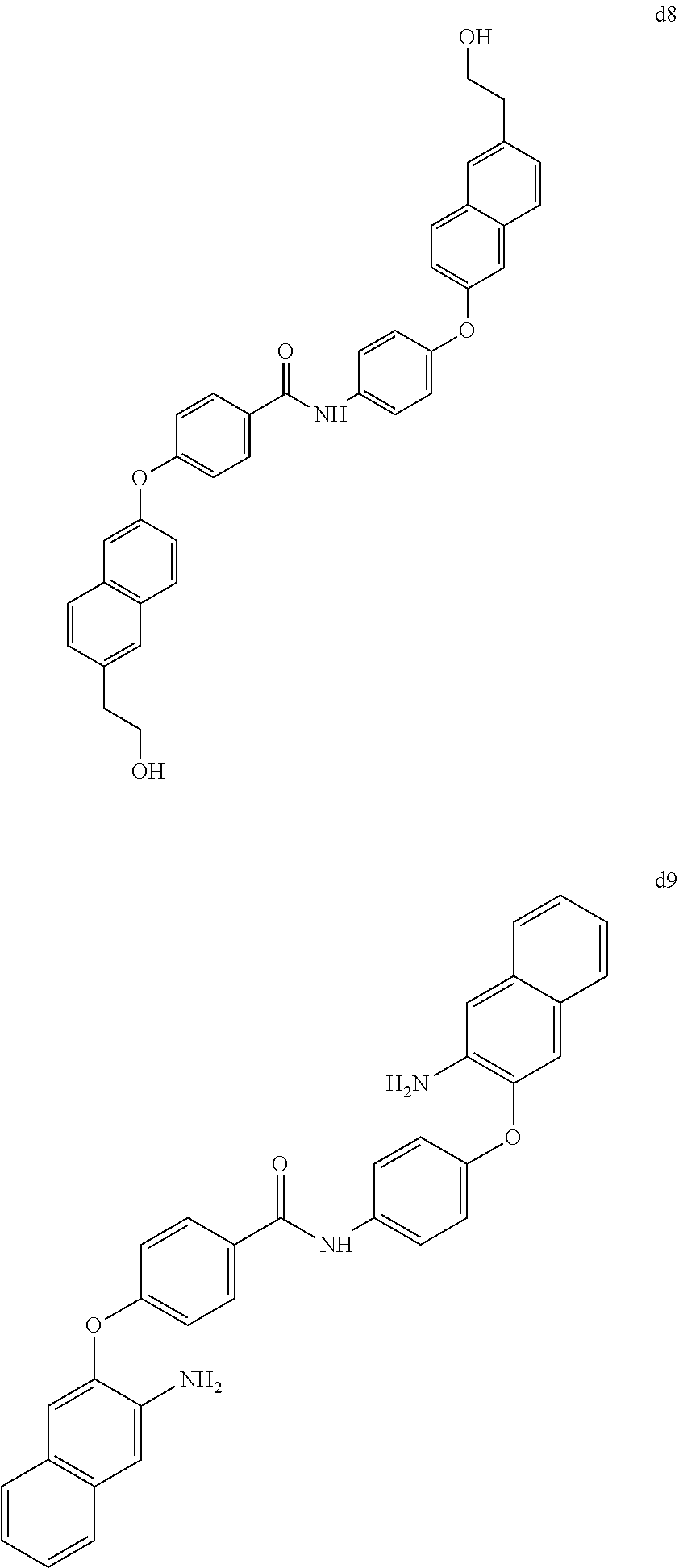
C00017

C00018

C00019

C00020

C00021

C00022

C00023

C00024
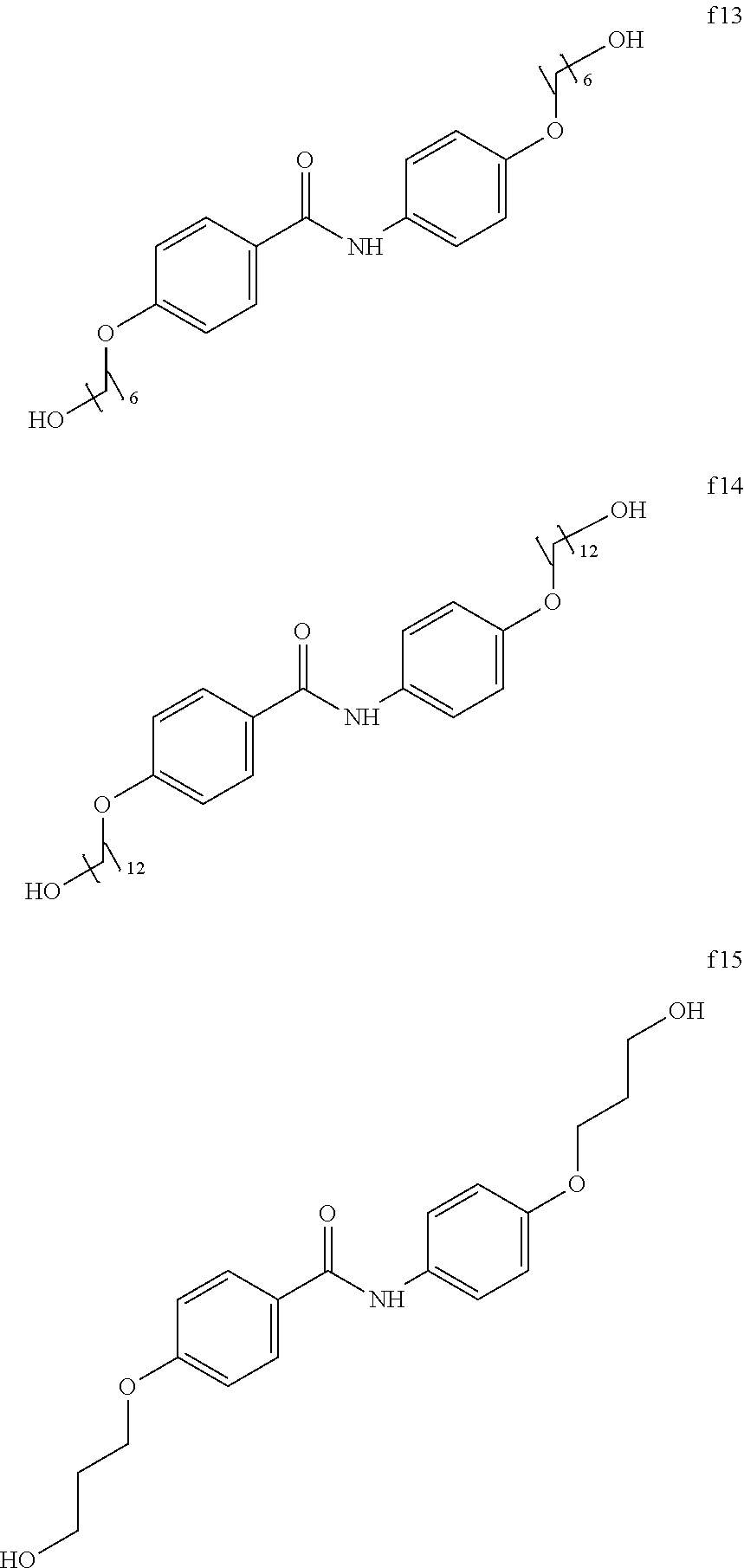
C00025

C00026

C00027

C00028

C00029

C00030

C00031

C00032

C00033

C00034

C00035

C00036

C00037

C00038
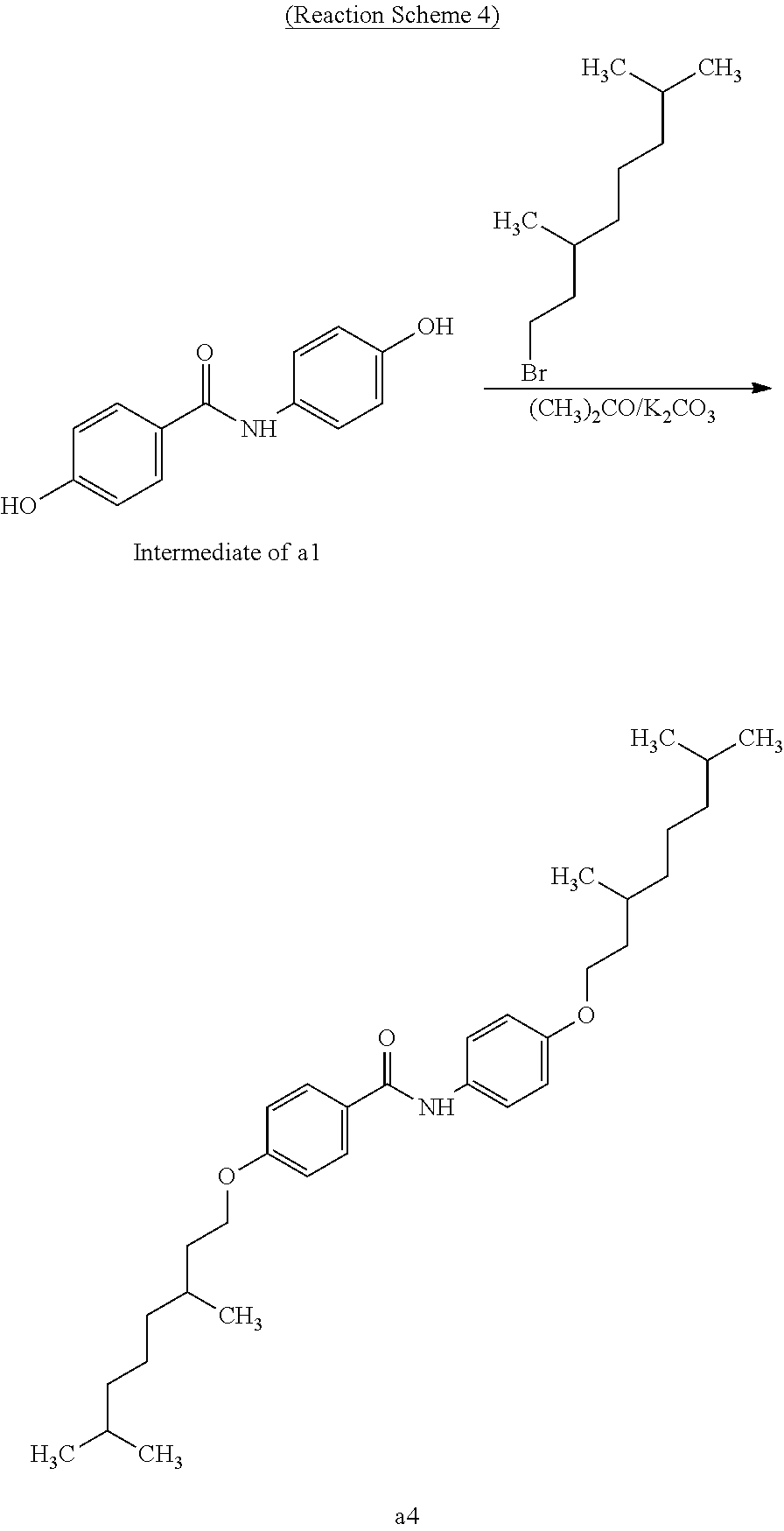
C00039
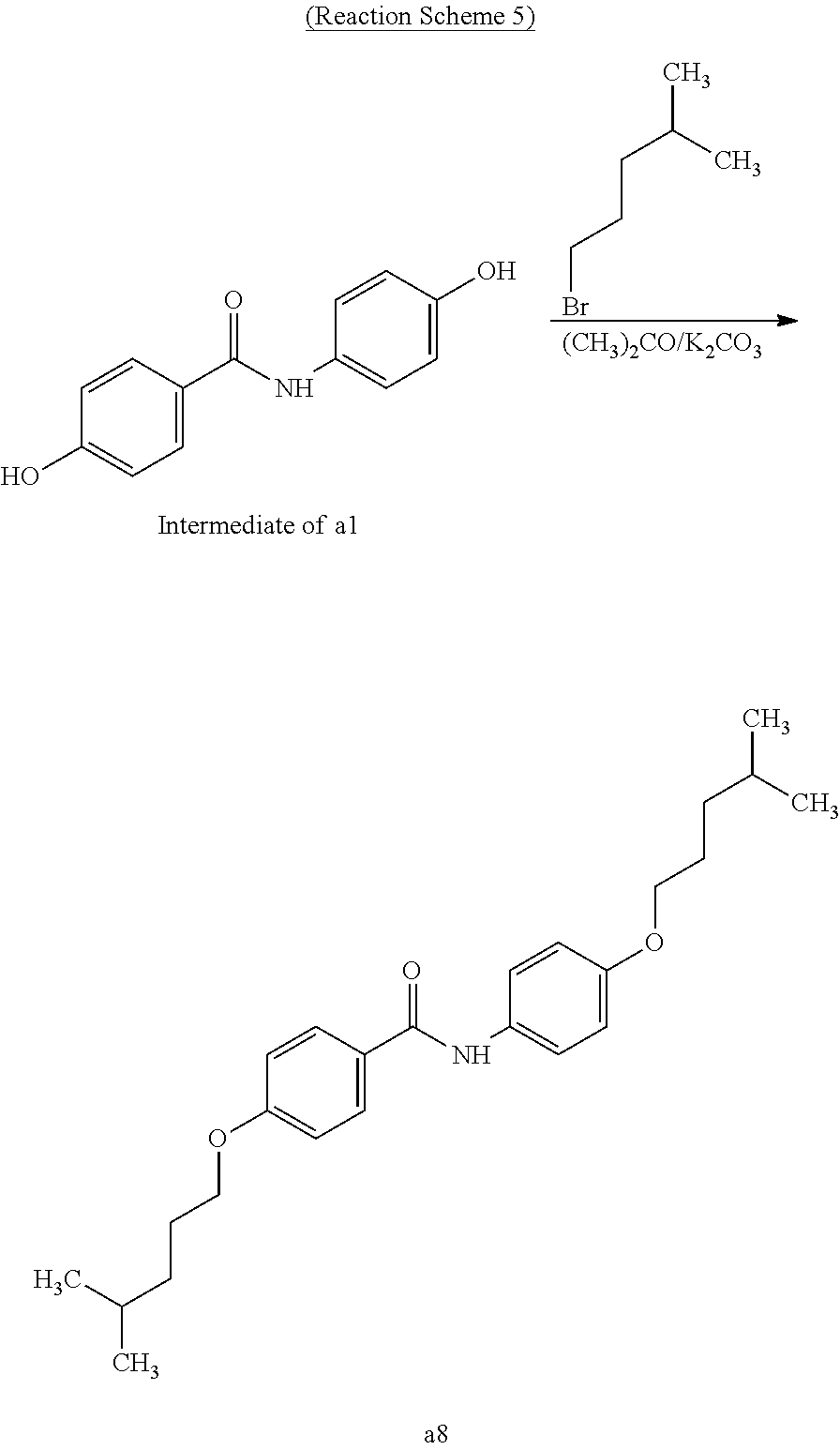
C00040

C00041

C00042

C00043

C00044

C00045

C00046

C00047

C00048

C00049

C00050

C00051

C00052
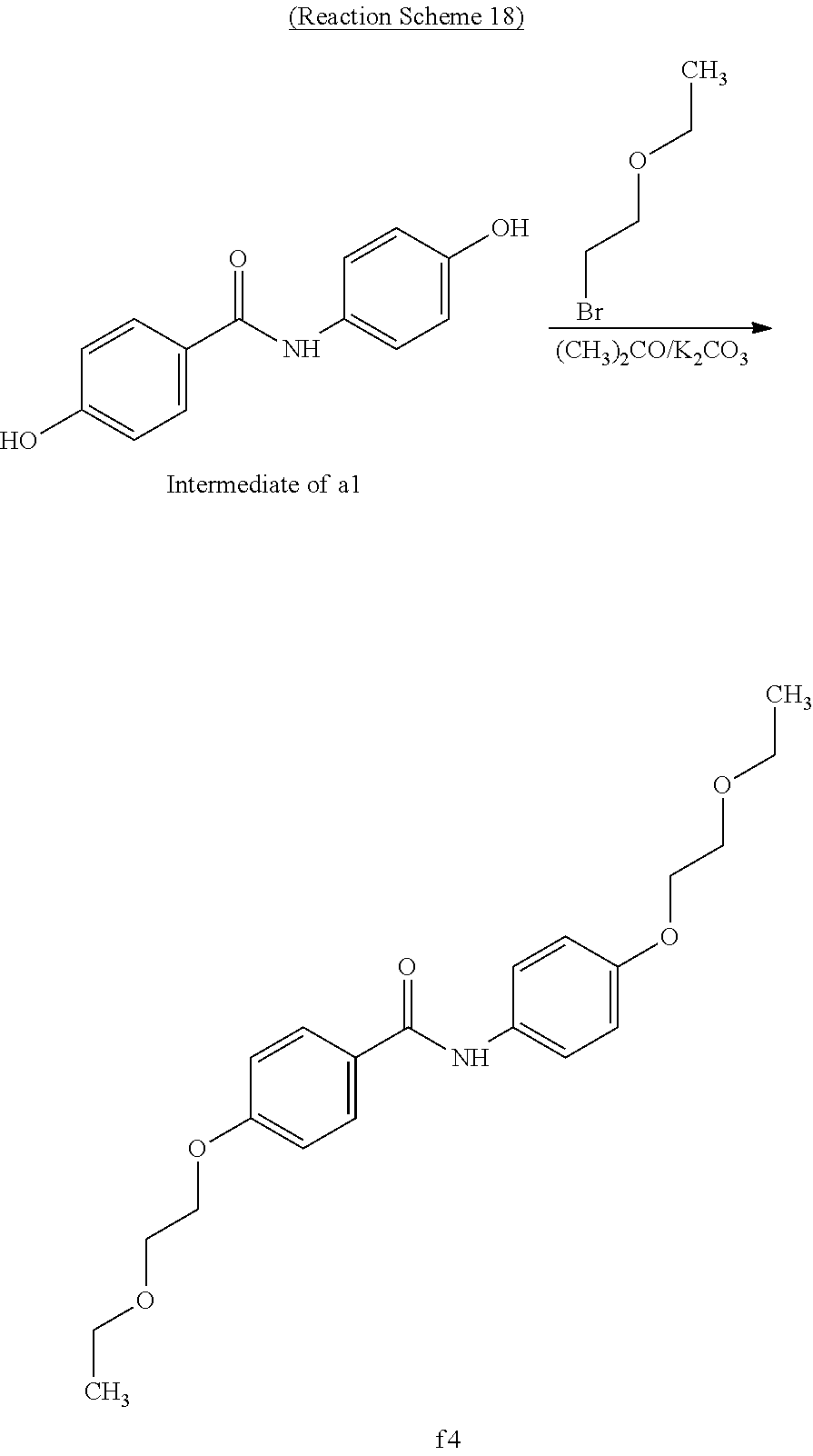
C00053

C00054

C00055
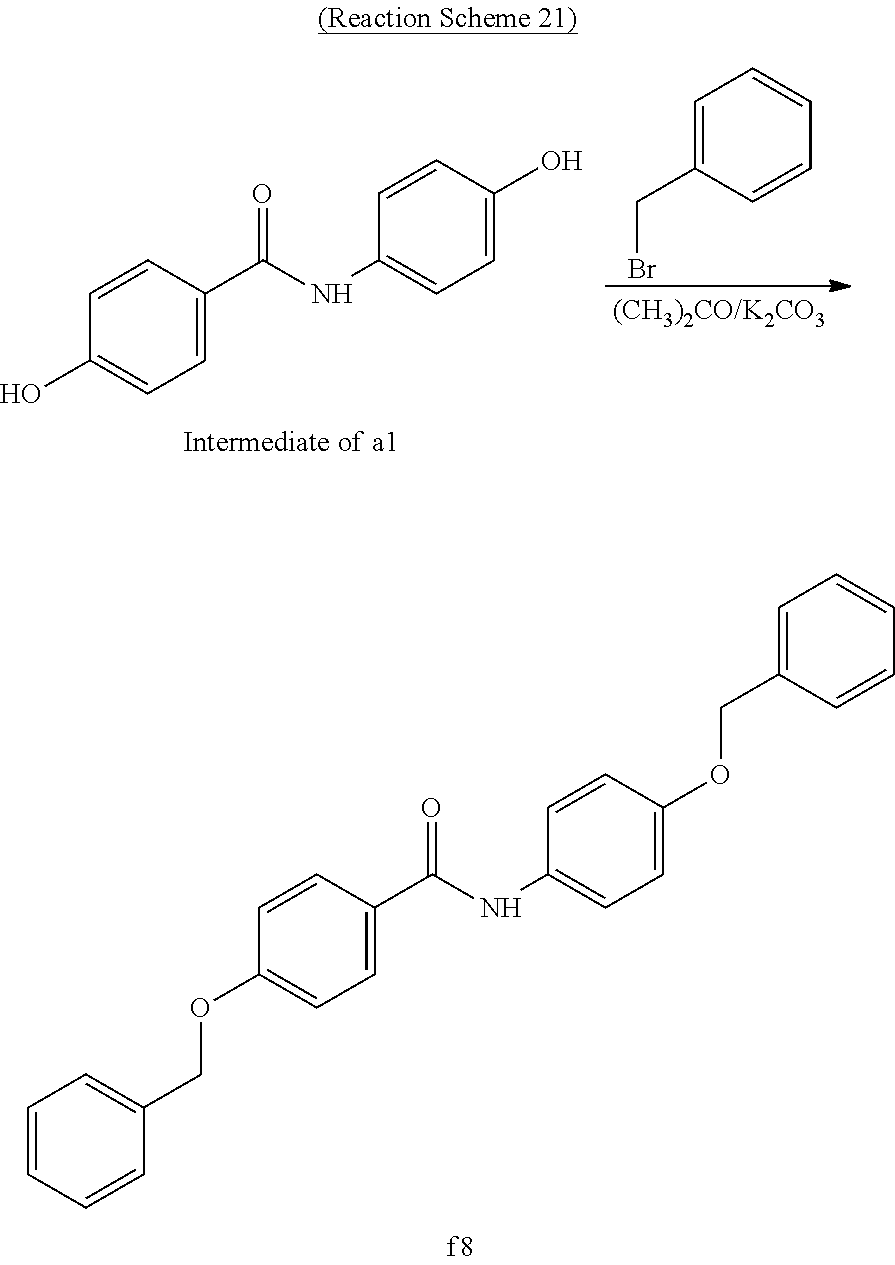
C00056

C00057

C00058
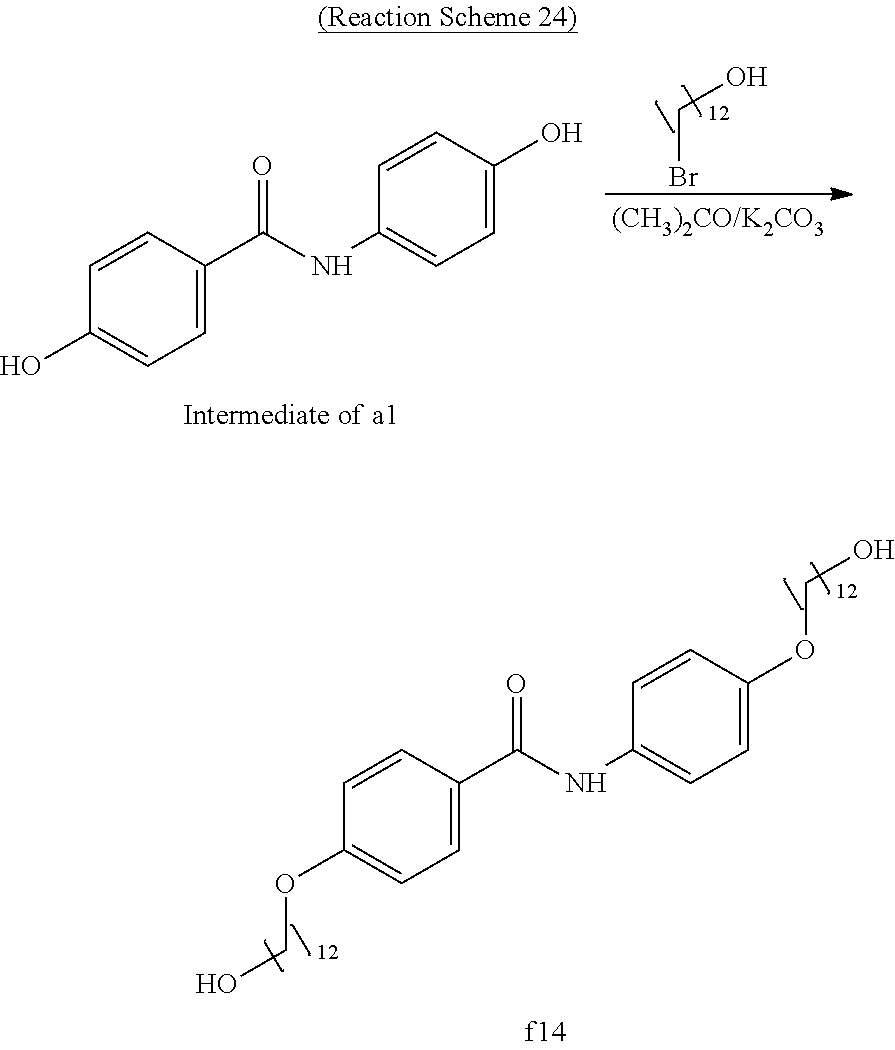
C00059

C00060

C00061

C00062

C00063
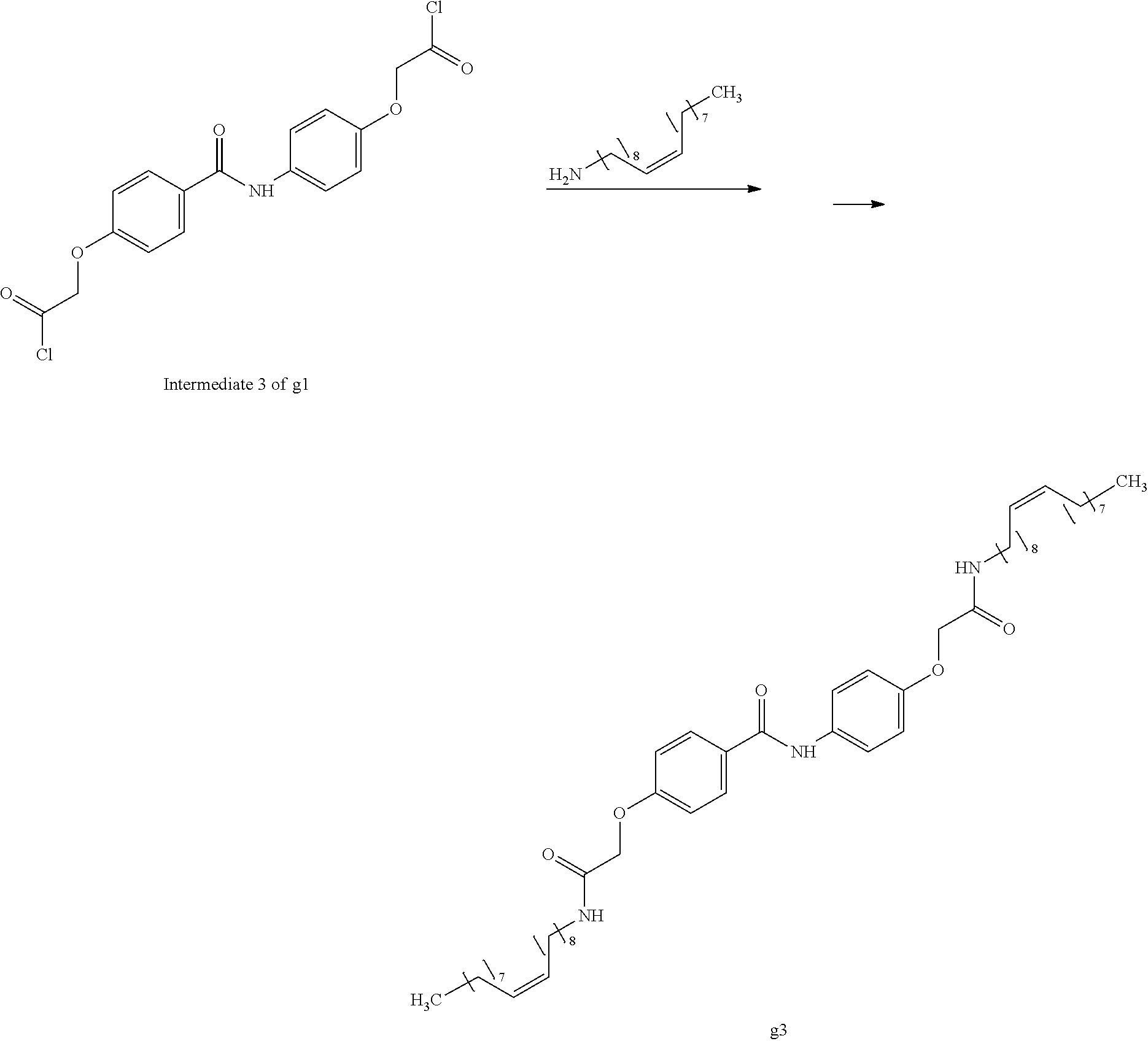
C00064

C00065

C00066
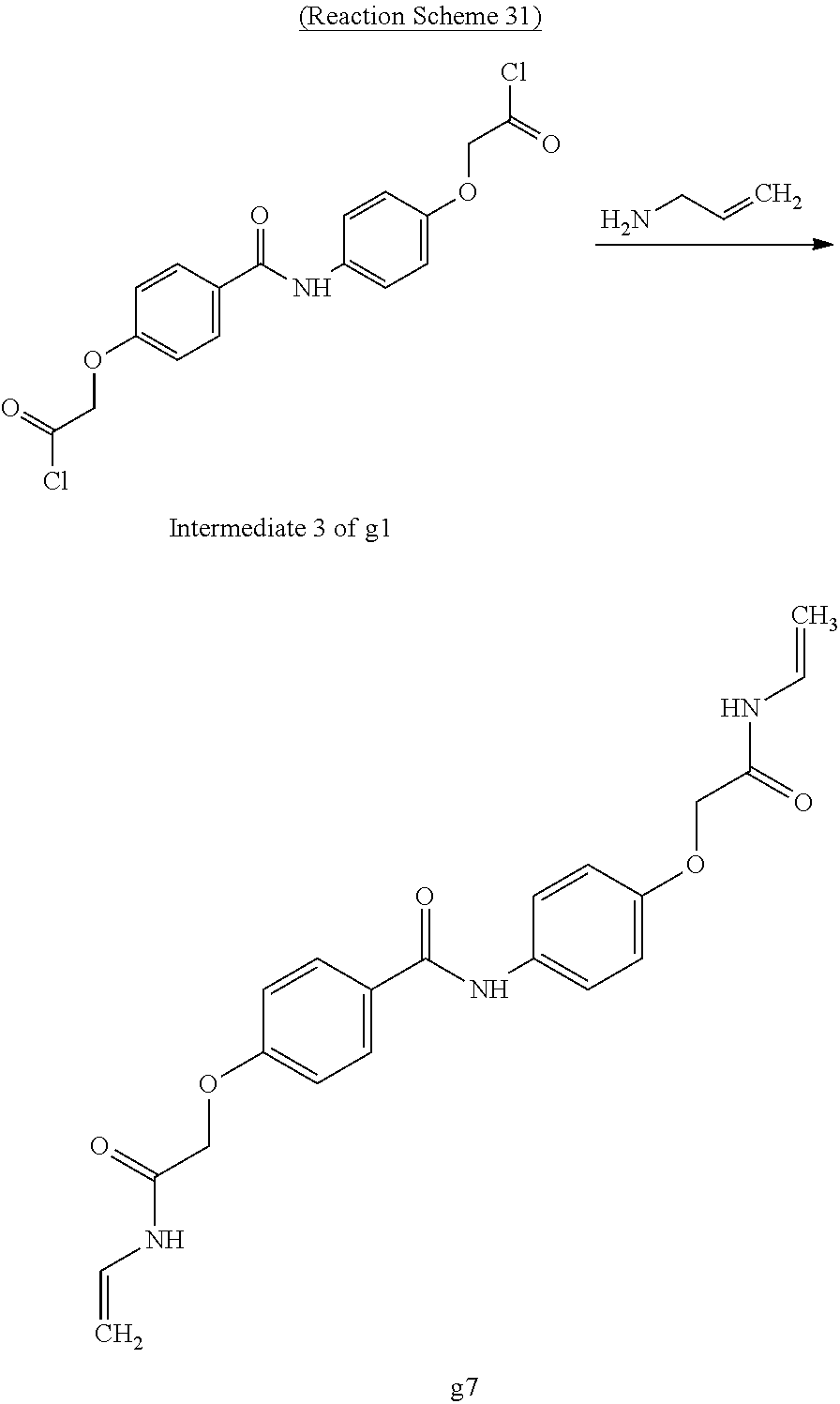
C00067

C00068

C00069

C00070

C00071

C00072

C00073

C00074

C00075

C00076

C00077
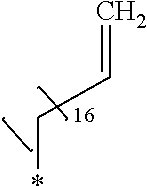
C00078

C00079
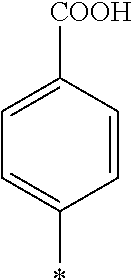
C00080

C00081

C00082
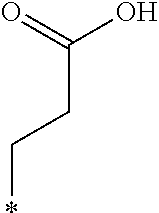
C00083

C00084

C00085
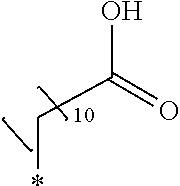
C00086

C00087
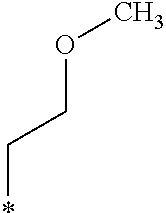
C00088
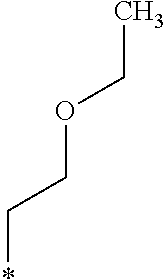
C00089
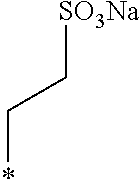
C00090

C00091

C00092

C00093

C00094

C00095

C00096

C00097

C00098
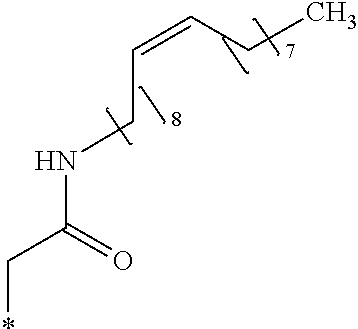
C00099

C00100

C00101

C00102
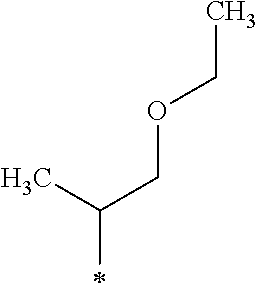
C00103
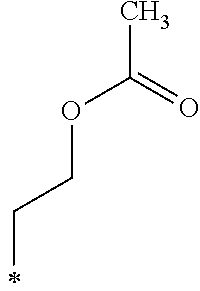
C00104

C00105

C00106

C00107

C00108

C00109

C00110

C00111

C00112

C00113

C00114

C00115

C00116

C00117

C00118

C00119

C00120

C00121

C00122

C00123

C00124

C00125
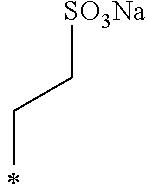
C00126

C00127

C00128
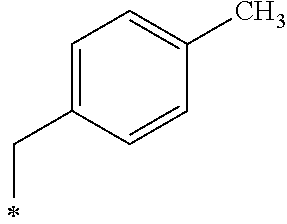
C00129
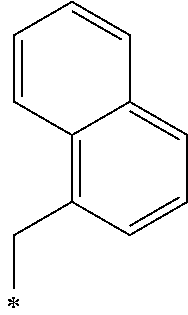
C00130

C00131

C00132

C00133

C00134

C00135

C00136

C00137
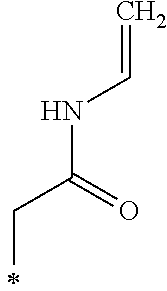
C00138

C00139

C00140

C00141

C00142

C00143

C00144

C00145

C00146

C00147
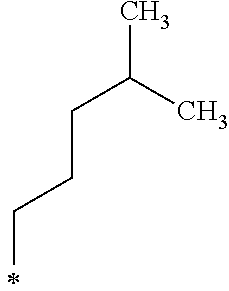
C00148

C00149

C00150

C00151

C00152
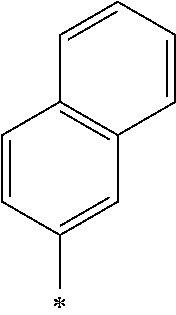
C00153
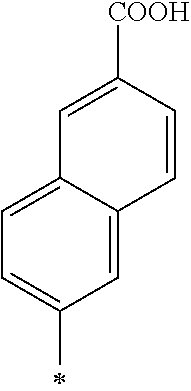
C00154

C00155
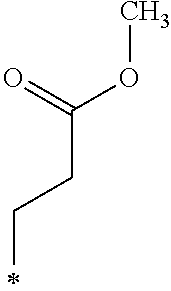
C00156

C00157

C00158
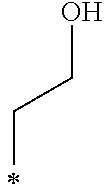
C00159
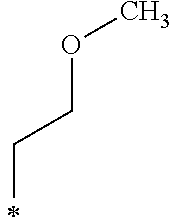
C00160

C00161

C00162
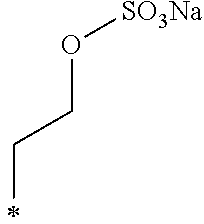
C00163

C00164

C00165

C00166

C00167

C00168

C00169

C00170

C00171
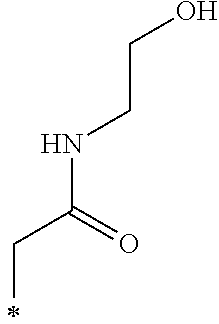
C00172

C00173
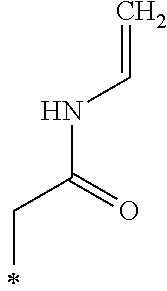
C00174

C00175
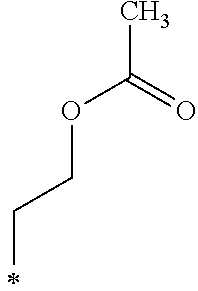
C00176

C00177

C00178

C00179

C00180

C00181
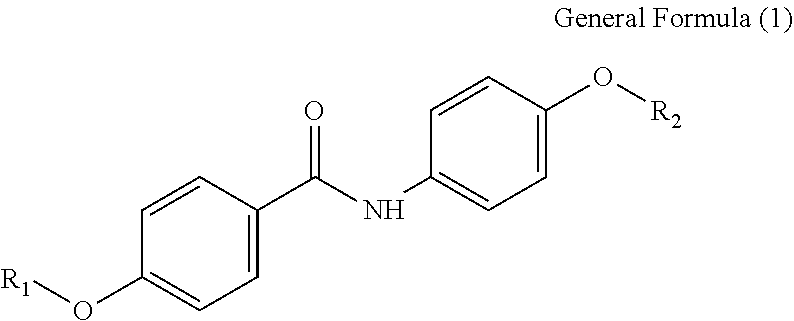
C00182
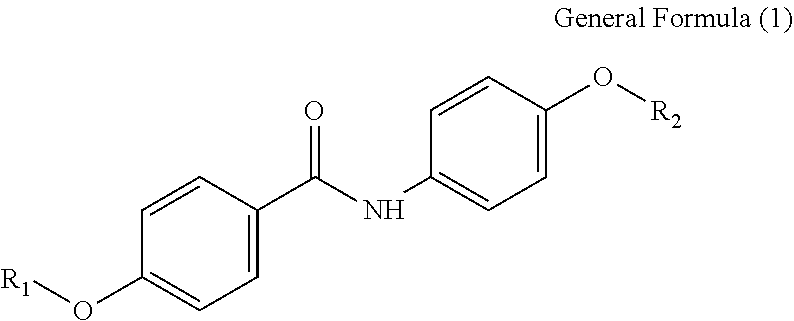
XML
uspto.report is an independent third-party trademark research tool that is not affiliated, endorsed, or sponsored by the United States Patent and Trademark Office (USPTO) or any other governmental organization. The information provided by uspto.report is based on publicly available data at the time of writing and is intended for informational purposes only.
While we strive to provide accurate and up-to-date information, we do not guarantee the accuracy, completeness, reliability, or suitability of the information displayed on this site. The use of this site is at your own risk. Any reliance you place on such information is therefore strictly at your own risk.
All official trademark data, including owner information, should be verified by visiting the official USPTO website at www.uspto.gov. This site is not intended to replace professional legal advice and should not be used as a substitute for consulting with a legal professional who is knowledgeable about trademark law.